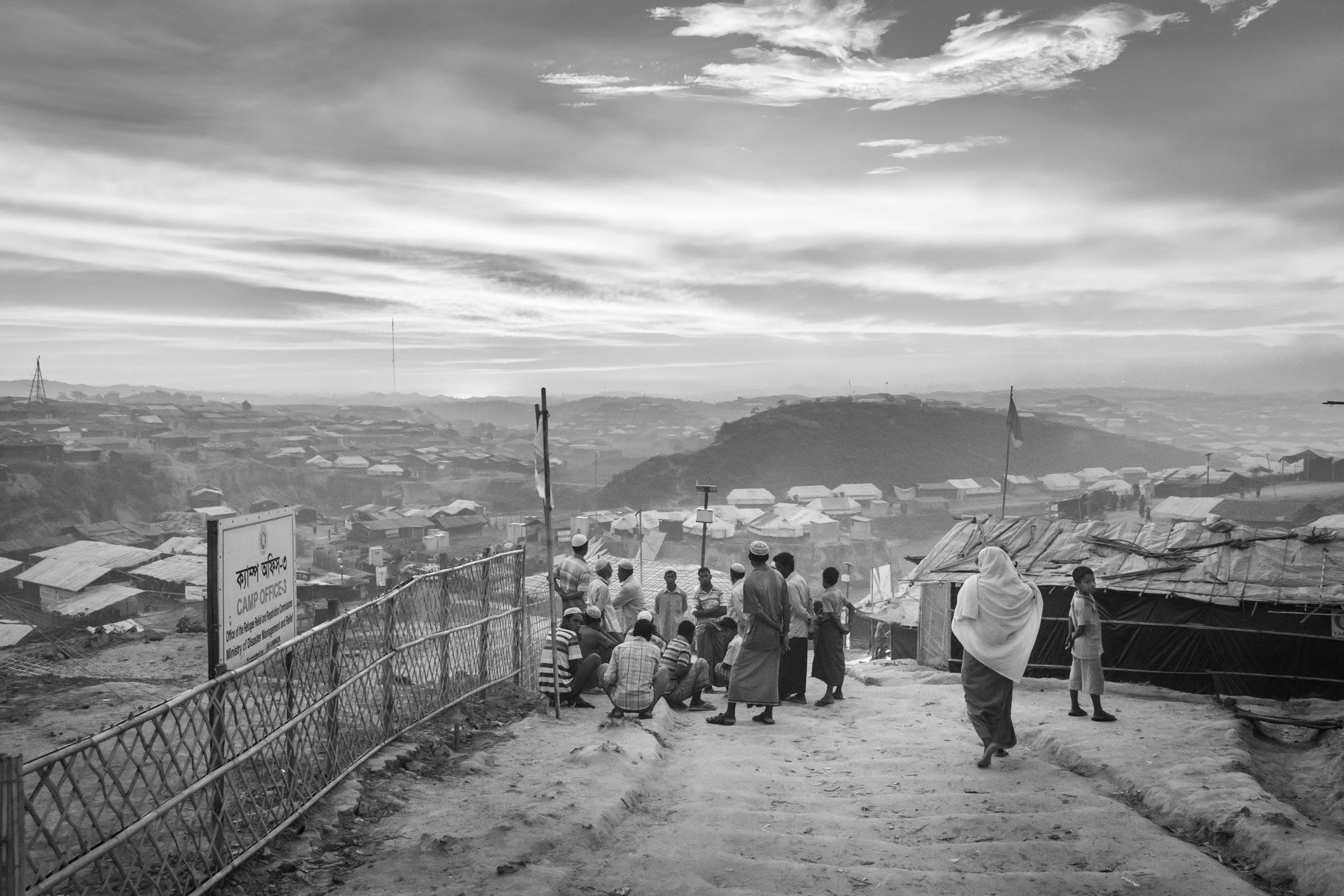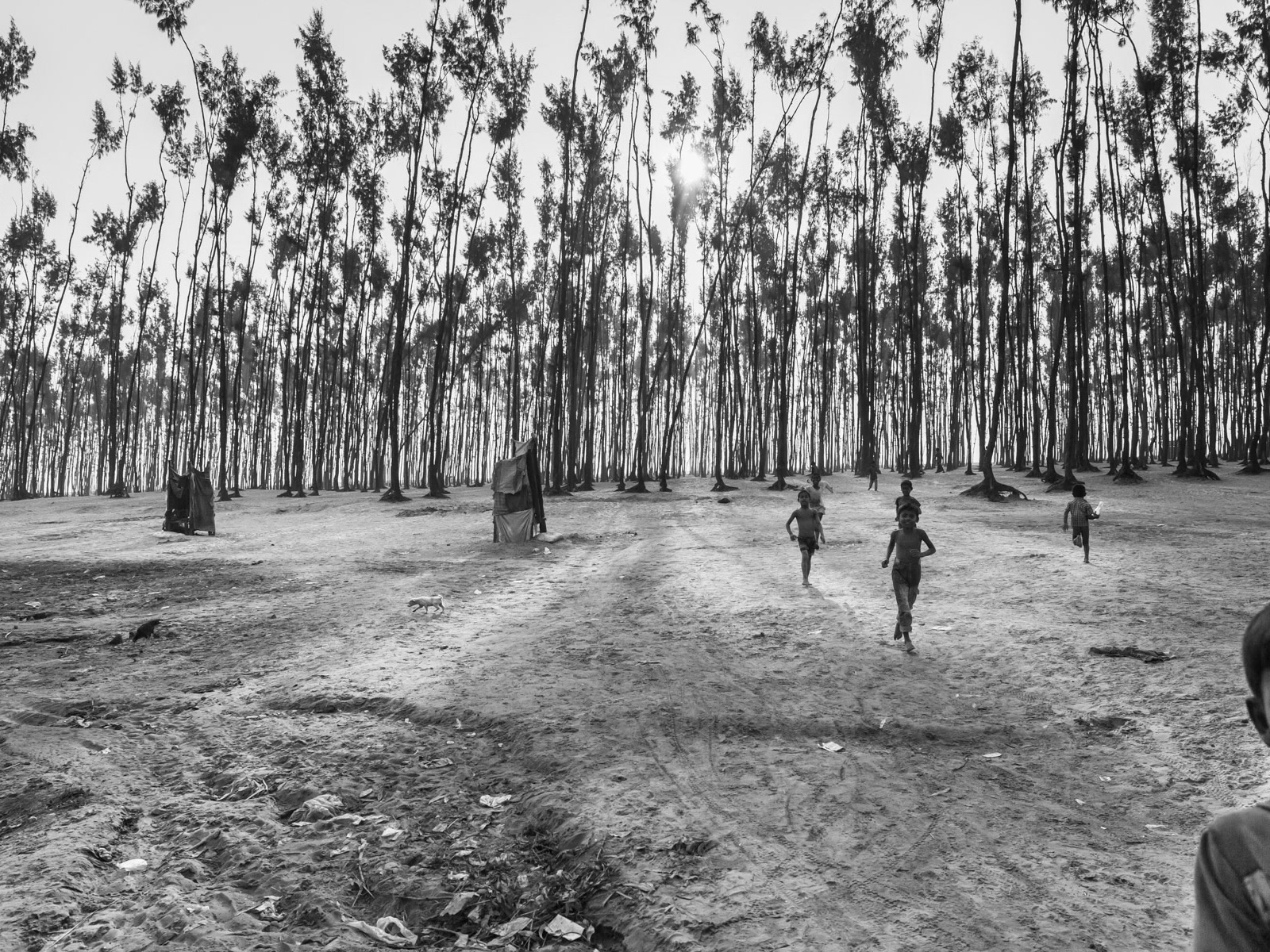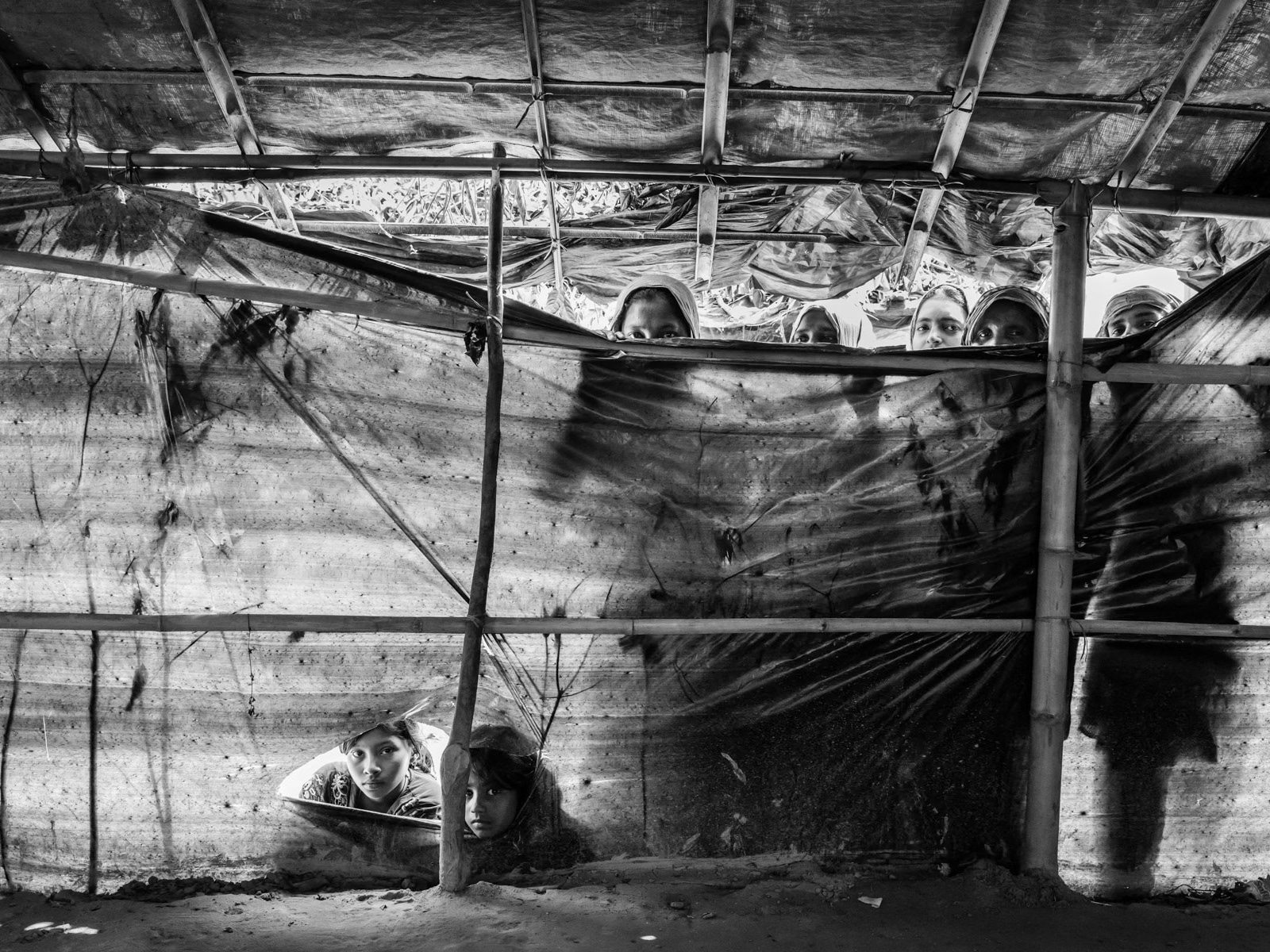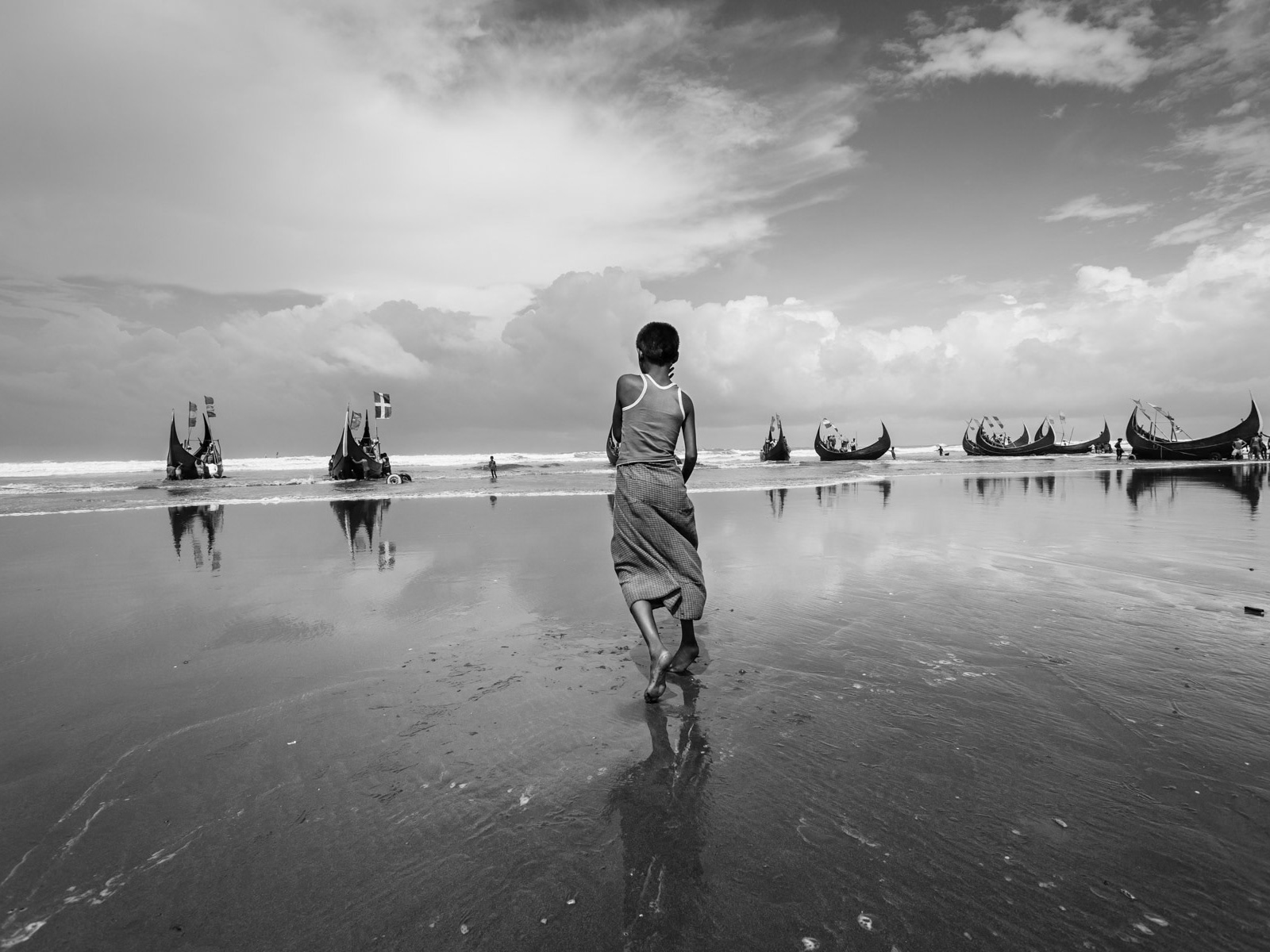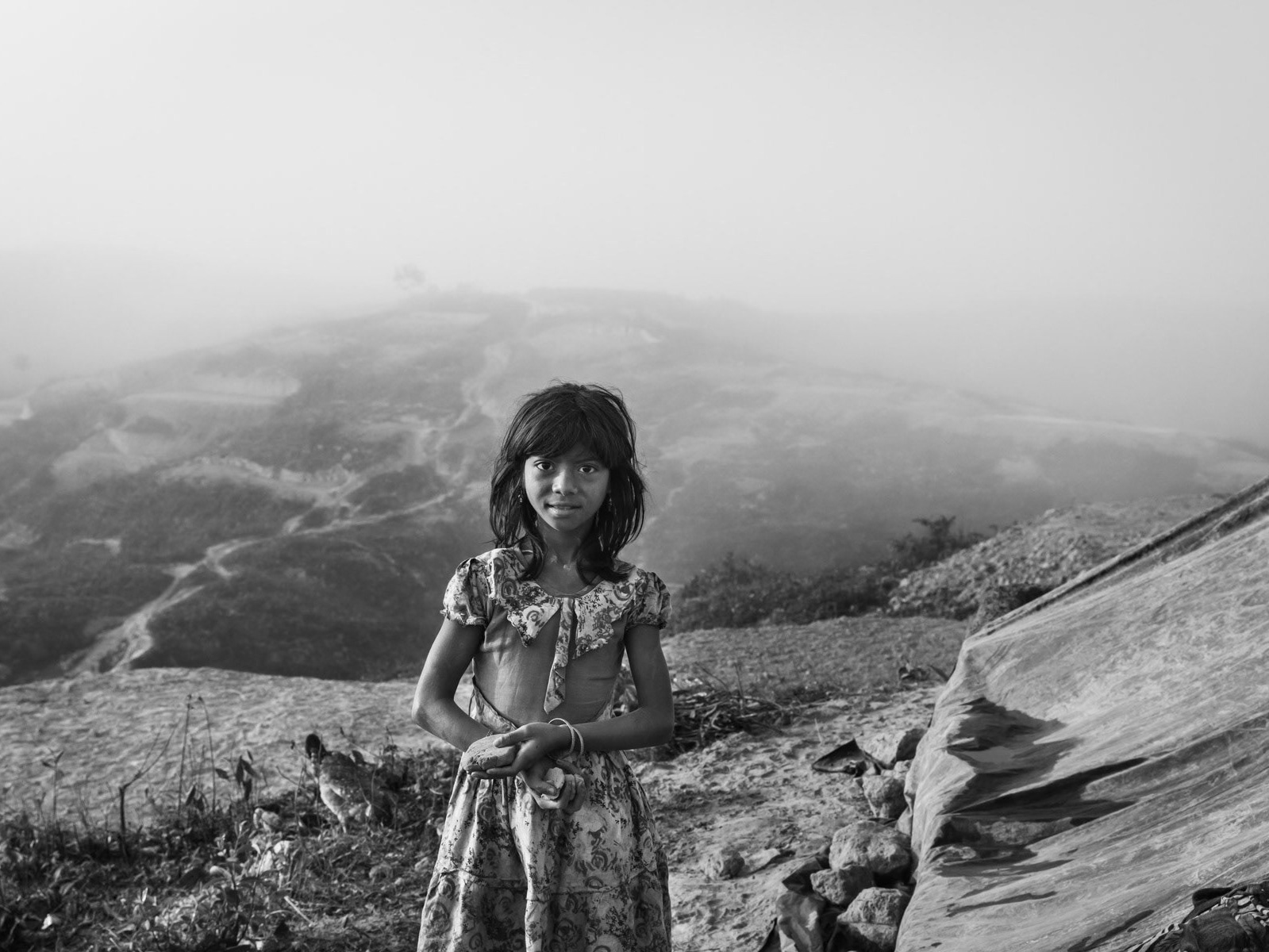The conditions of the Rohingya in Bangladesh, particularly those who arrived in successive waves in 1978, 1992, 2008, and 2012, remain dire and precarious. These refugees fled Myanmar to escape waves of persecution, seeking refuge across the border in Bangladesh, where they face numerous challenges. The majority of the Rohingya population in Bangladesh—numbering over half a million—live in overcrowded, squalid conditions in makeshift settlements. Tragically, a significant number of them are unregistered, with less than 10% officially recognized as refugees. This lack of registration means they are excluded from essential services such as humanitarian aid, healthcare, education, and the ability to work legally.
In these settlements, the Rohingya face a life marked by uncertainty and deprivation. Without formal refugee status, they are denied access to government assistance and live on the margins of society. Their daily existence is characterized by a struggle to find basic commodities like food, clean water, and shelter. The absence of health services means that preventable diseases spread easily, and malnutrition is common, particularly among children. Additionally, the lack of educational opportunities traps younger generations in cycles of poverty and despair.
The trauma from these earlier waves of persecution is profound. Many Rohingya are still haunted by the violence they experienced in Myanmar, and their vulnerability is heightened by the lack of psychological support. The community is often composed of women and children who are especially at risk. Many have lost contact with family members who were left behind or died along the perilous journey, leading to an enduring sense of isolation and hopelessness.
As the situation continues, the Rohingya are left in limbo, unwanted by both Myanmar and Bangladesh, with their future uncertain and their suffering ongoing.
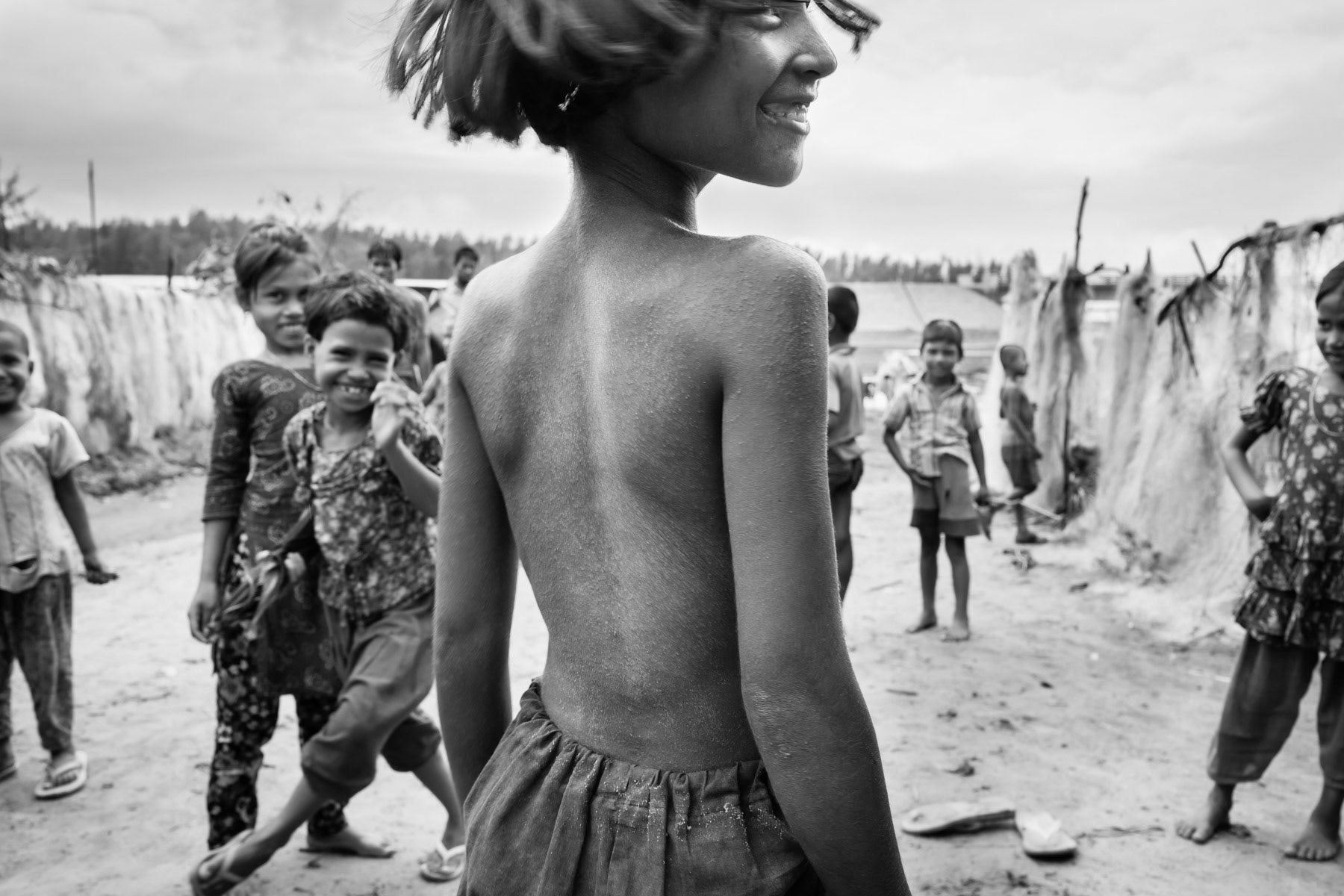
Children playing at a makeshift refugee camp for un-registered Rohingya refugees from Myanmar. Before the renewed waves of ethnic cleansing of 2016 and 2017 more than 250,000 Rohingya refugees were already living in Bangladesh. Shamplapur, Bangladesh, June 2015

New makeshift construction for the new wave of Rohingya refugees arriving In Bangladesh. Nearly 100,000 persecuted refugees have arrived from Maungdaw township in Myanmar since October 2016. New extension of Kutupalong refugee camp, Cox's Bazar, Bangladesh, February 2017
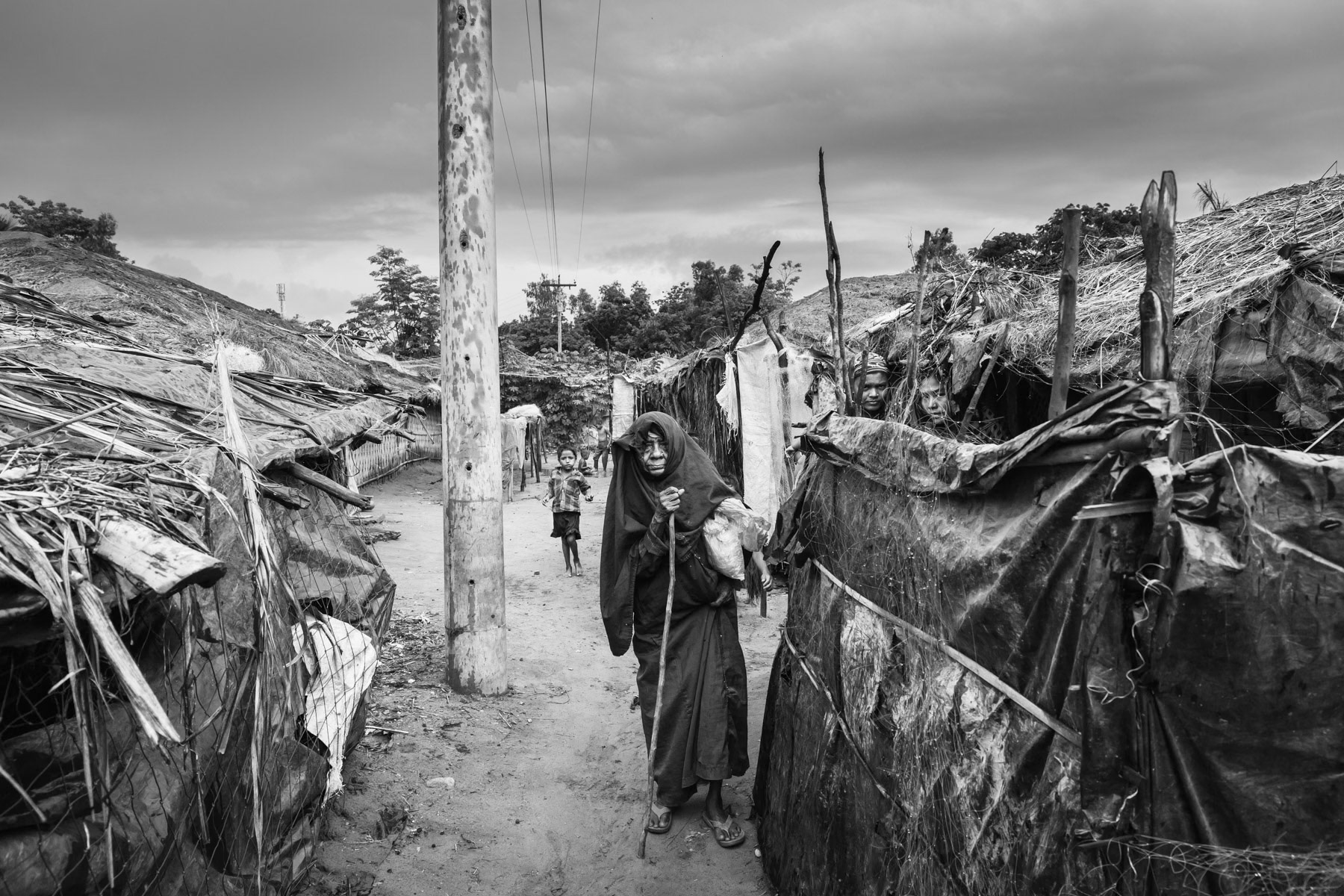
Un-registered camp for Rohingya refugees in Southern Bangladesh. Merely 50,000 out of the 500,000 Rohingya refugees are registered and mainly arrived in the period 1990-92. The rest that are un-registered have no access to education, health and other forms of support as UN agencies and NGOs are not allowed to assist them by the authorities in order to avoid that more refugees from Myanmar would come. East Nayapara camp, Shamlapur, Bangladesh, June 2015

Rohingya daily labour at a fish drying plant near Cox's Bazar, Bangladesh, December 2015
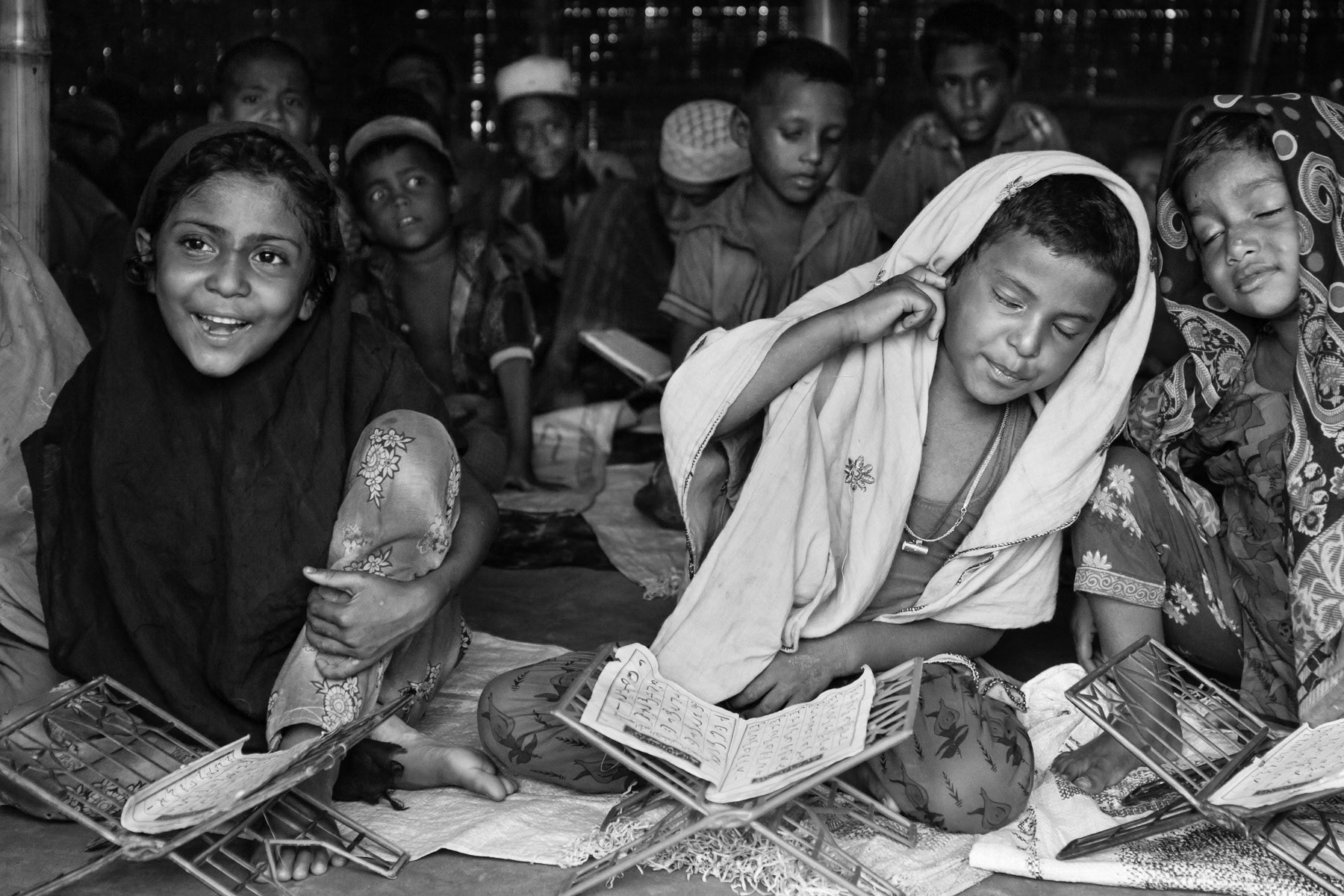
Rohingya refugees at an informal coranic school. Medresas are usually the only from of education that un-registered refugees have. Teknaf, Bangladesh, June 2015
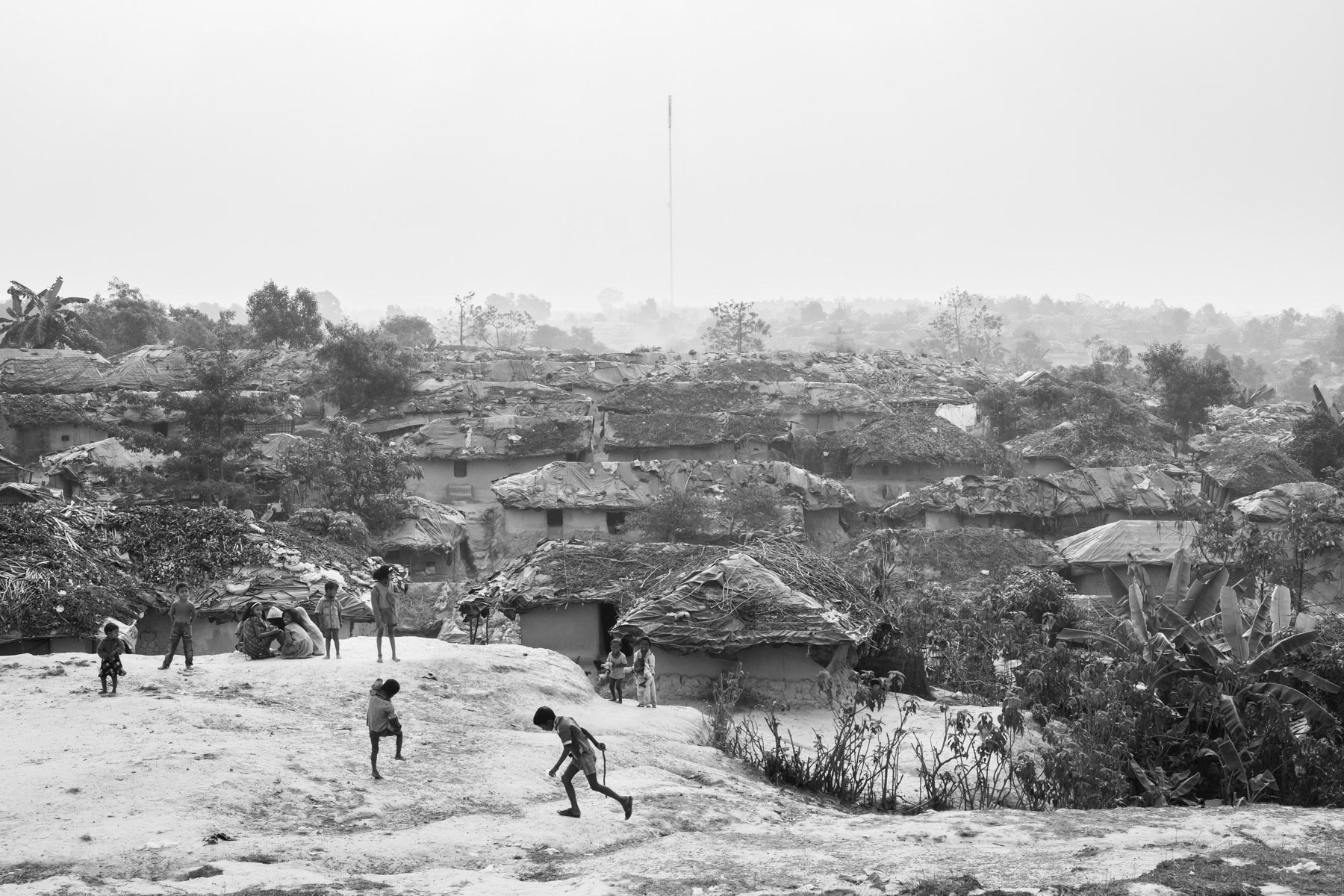
Kutupalong camp for Rohingya registered refugees, Ukhiya, Bangladesh, December 2015
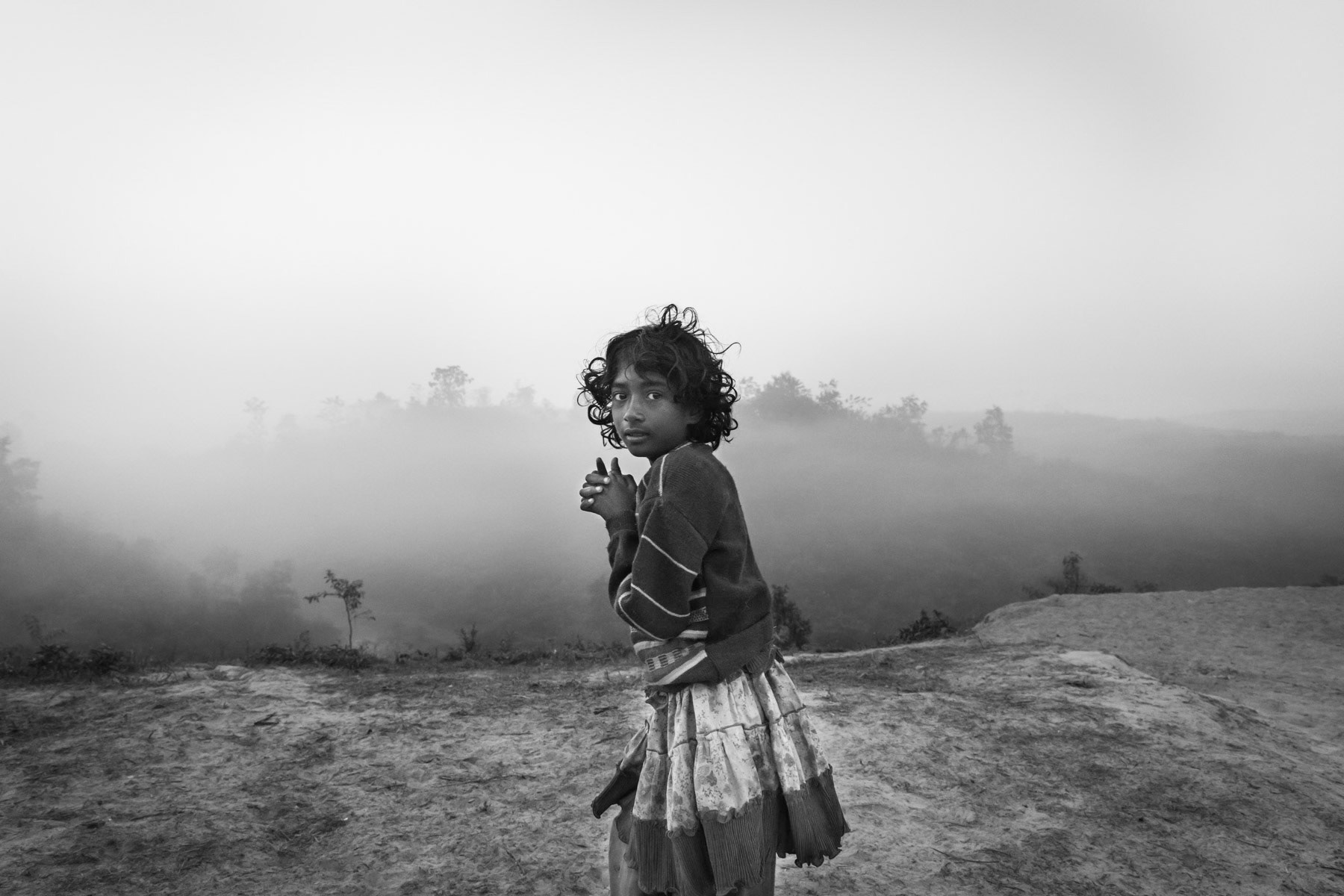
Rohingya girl that arrived few days ago with her family fleeing persecution and ethnic cleansing campaigns in northern Rakhine. Kutupalong refugee camp, Bangladesh, February 2017
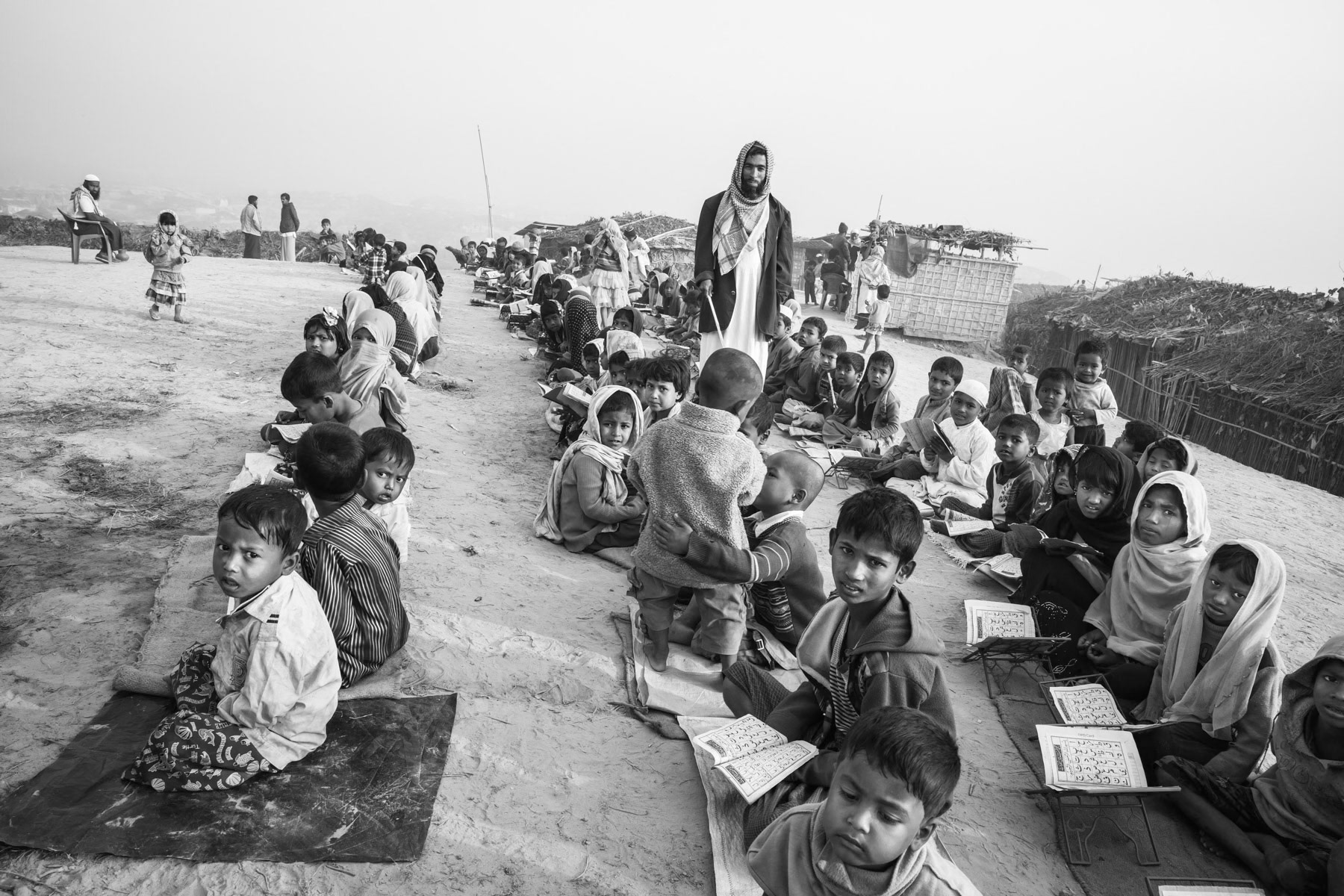
Improvised coranic school for Rohingya children that arrived from Myanmar during the past weeks. Having no access to formal education, un-registered Rohingya refugees have only the coranic schools as sole form of education. New part of Kutupalong refugee camp for newly arrived refugees from Myanmar. Cox's Bazar, February 2017
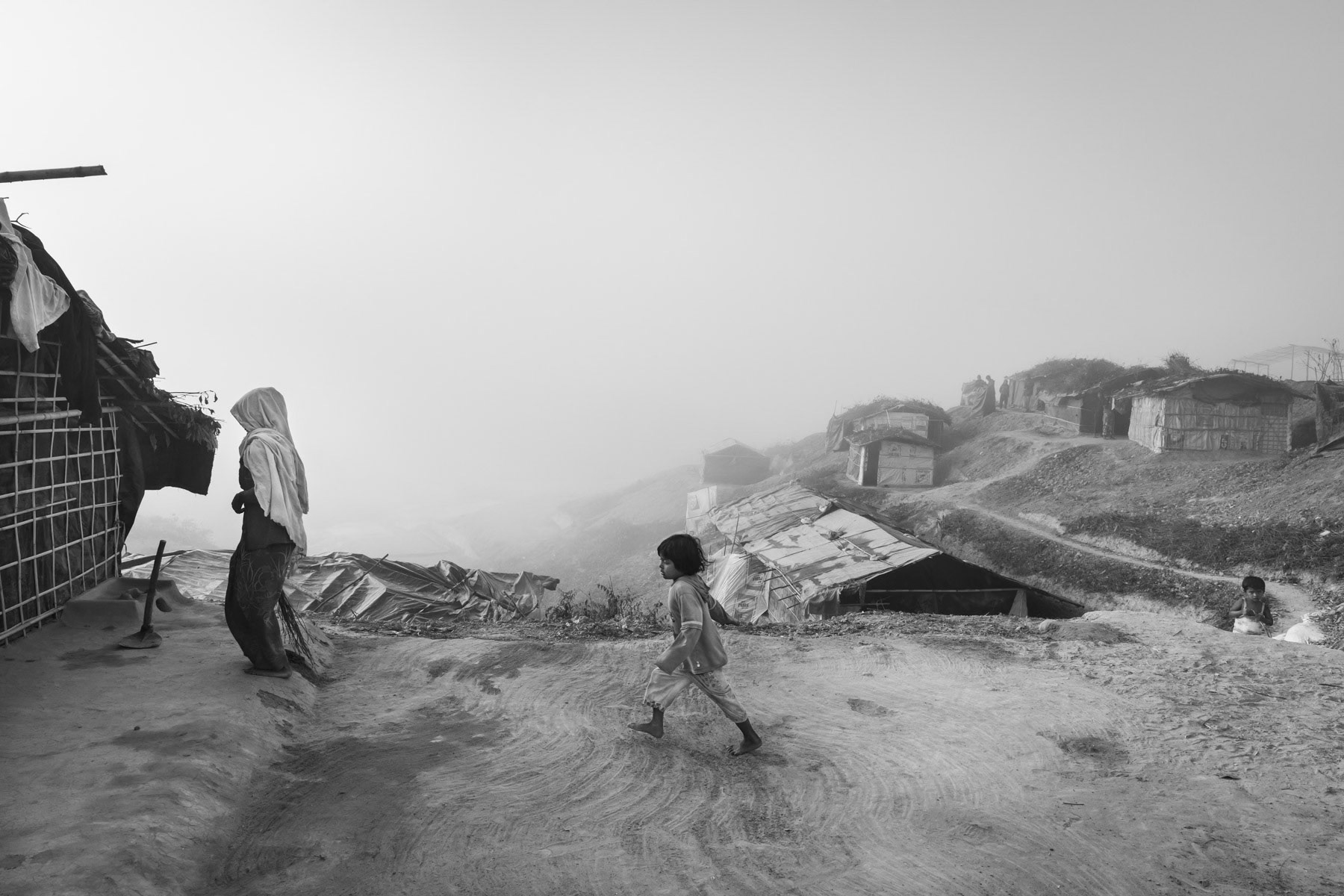
New part of Kutupalong refugee camp for Rohingya being extended on daily basis to cope with the 100,000 Rohingya that have fled violence in Rakhine since October 2016. Kutupalong, Bangladesh, February 2017

Rohingya refugee, Char Para on Maheskhali peninsula, Bangladesh, May 2016
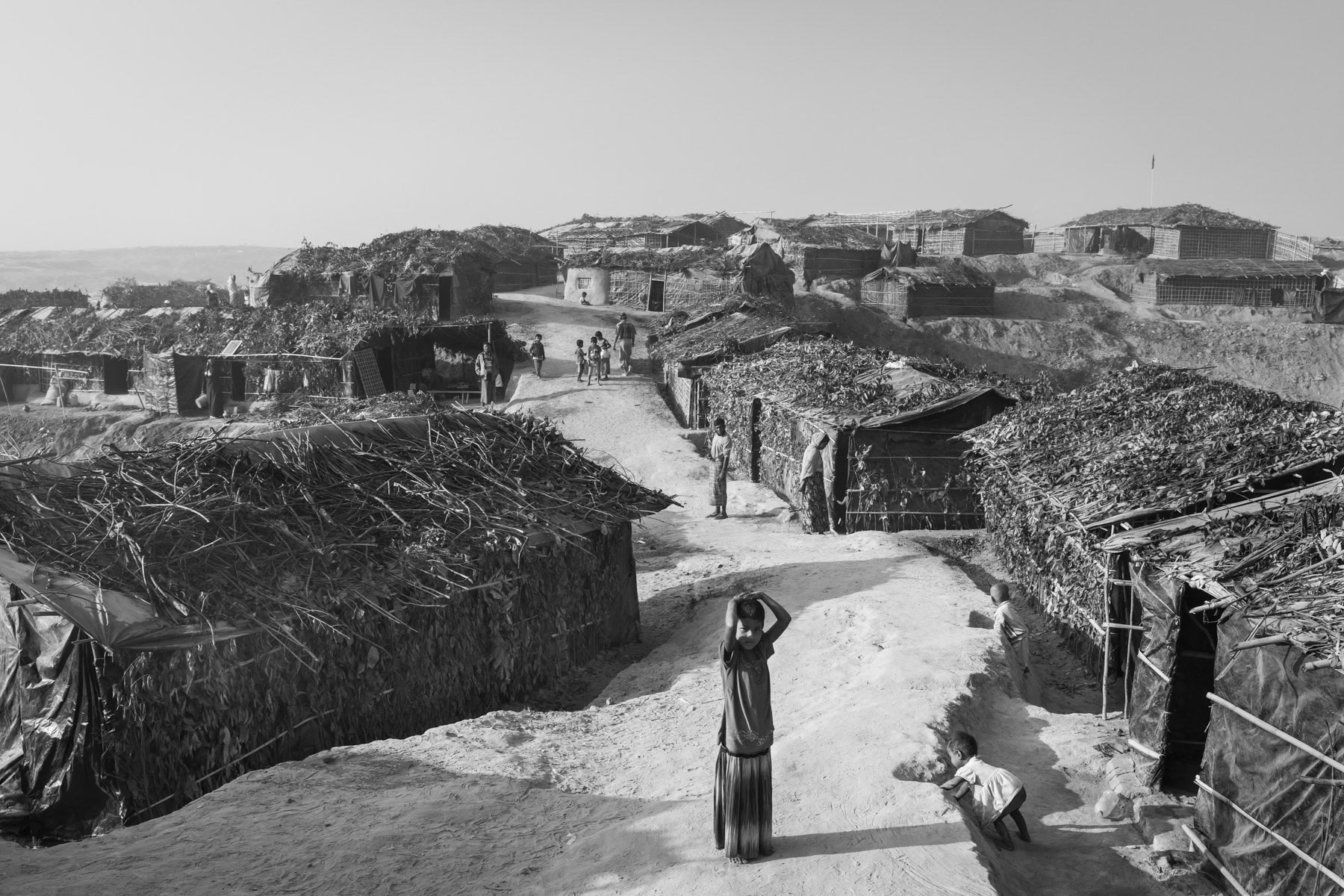
New makeshift construction for the new wave of Rohingya refugees arriving In Bangladesh. Nearly 100,000 persecuted refugees have arrived from Maungdaw township in Myanmar since October 2016. New extension of Kutupalong refugee camp, Cox's Bazar, Bangladesh, February 2017
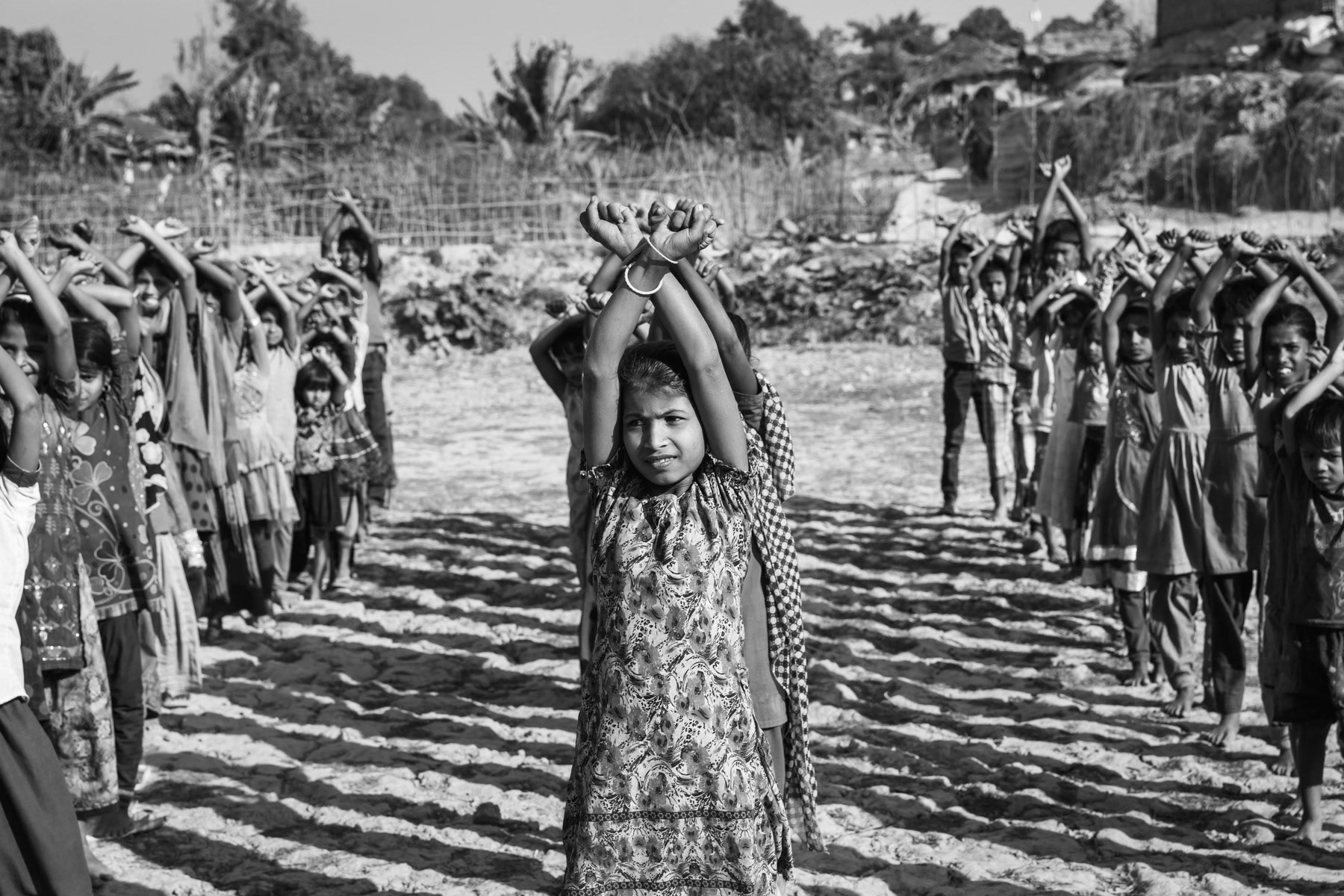
Exercise session for children that have recently arrived in Bangladesh fleeing persecution in Myanmar. Kutupalong camp for Rohingya refugees, February 2017
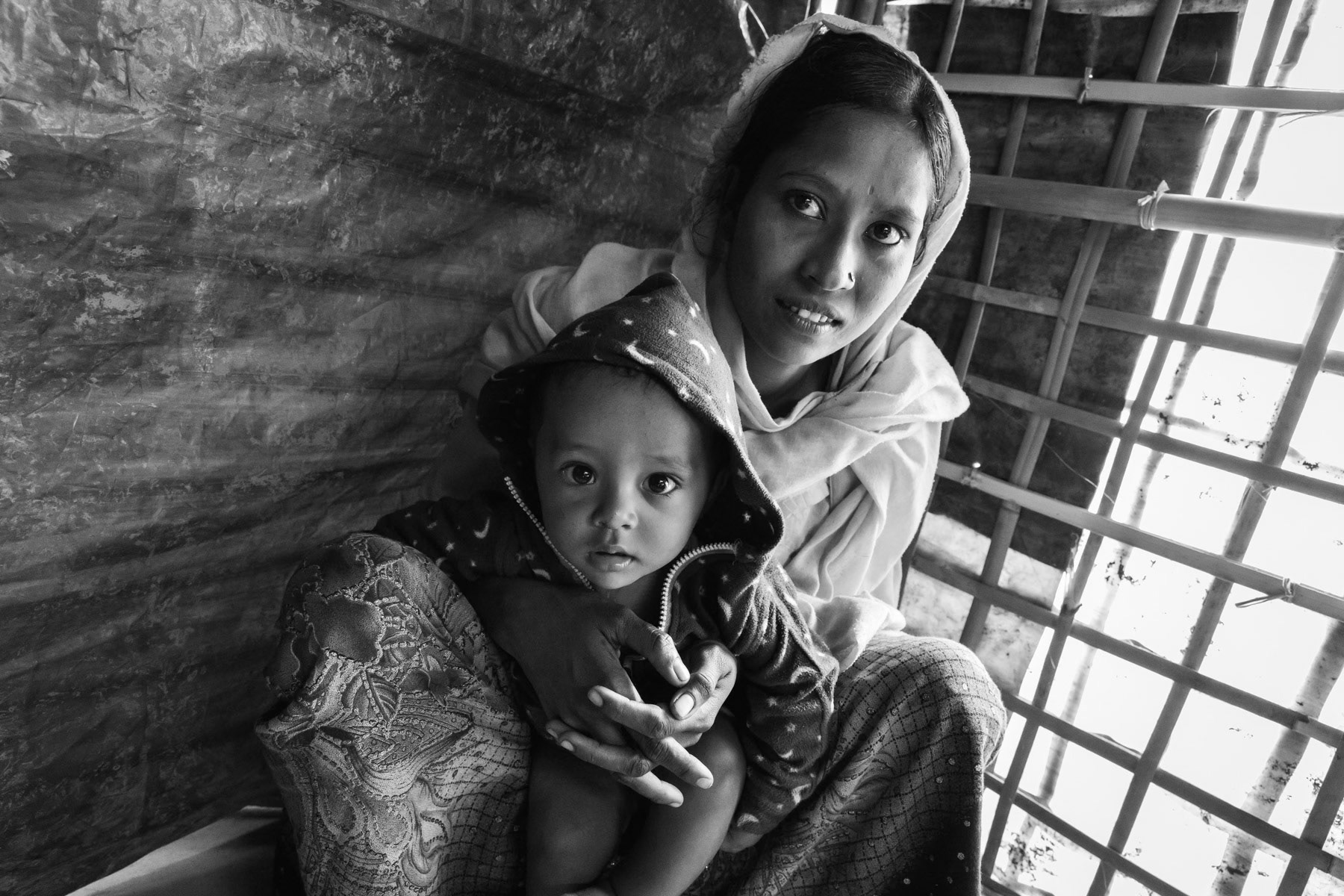
Rohingya woman and her child after having arrived from Myanmar few weeks ago, fleeing persecution. Balukhali camp for newly arrived Rohingya refugees, Bangladesh, February 2017
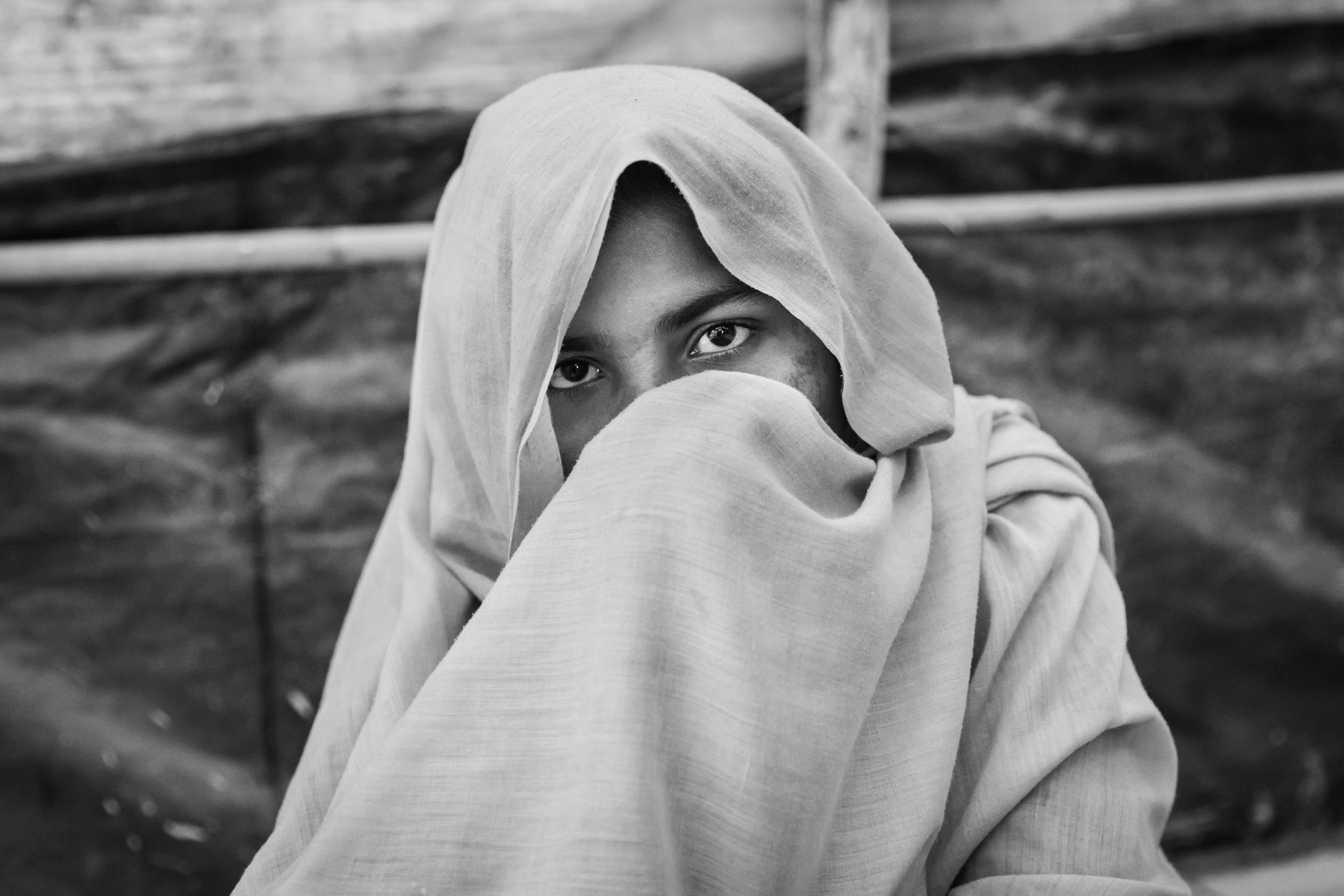
Another rape victim of the ongoing ethnc cleansing campaign in Rakhine against the Rohingya muslim minority. Fled to Bangladesh few weeks earlier and is now stranded in a refugee camp where humanitarian aid, medical care and psychological support have not yet started despite the accute crisis. Kutupalong refugee camp, Cox's Bazar, Bangladesh, February 2017
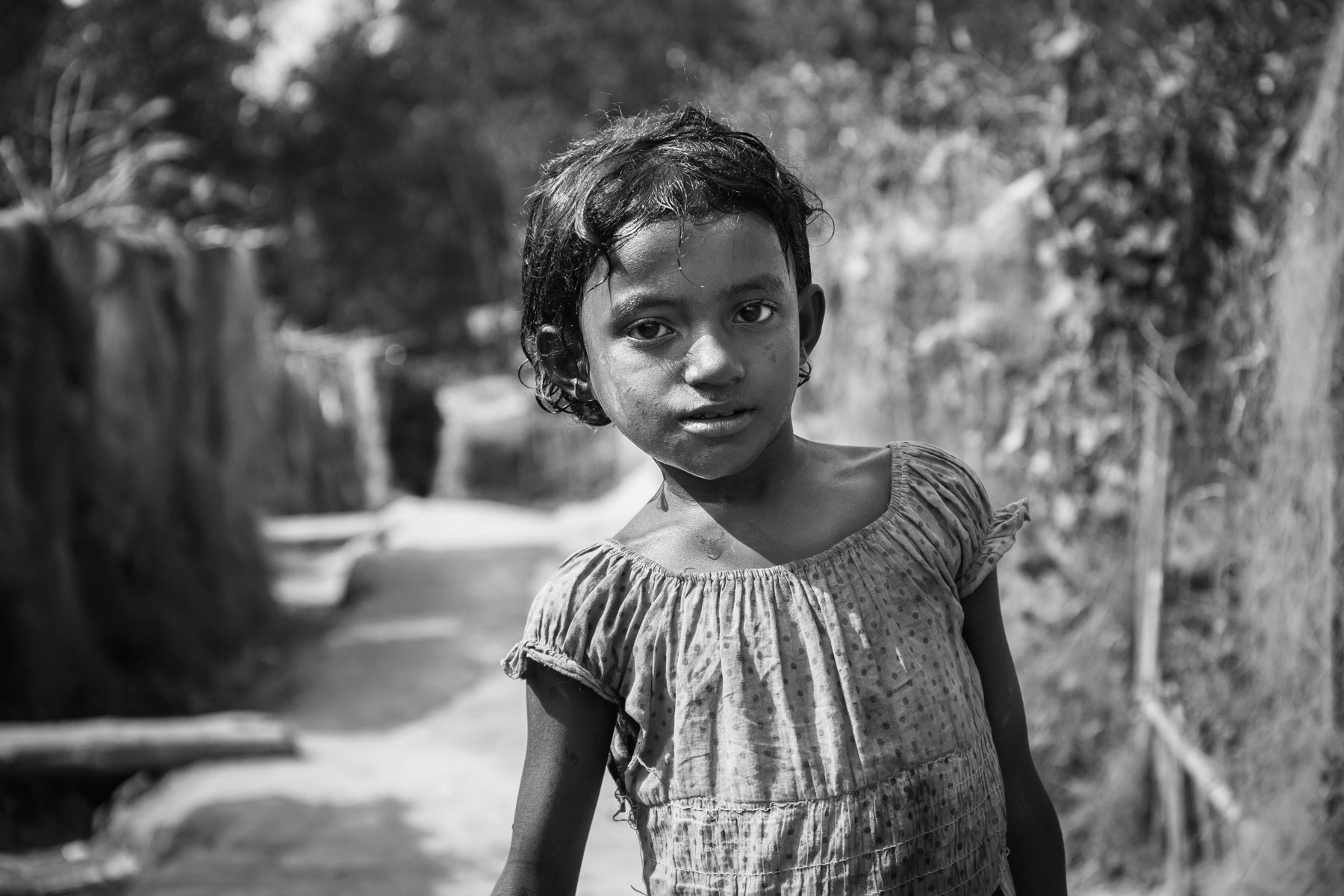
Stateless Rohingya refugee in Bangladesh, Teknaf, December 2015
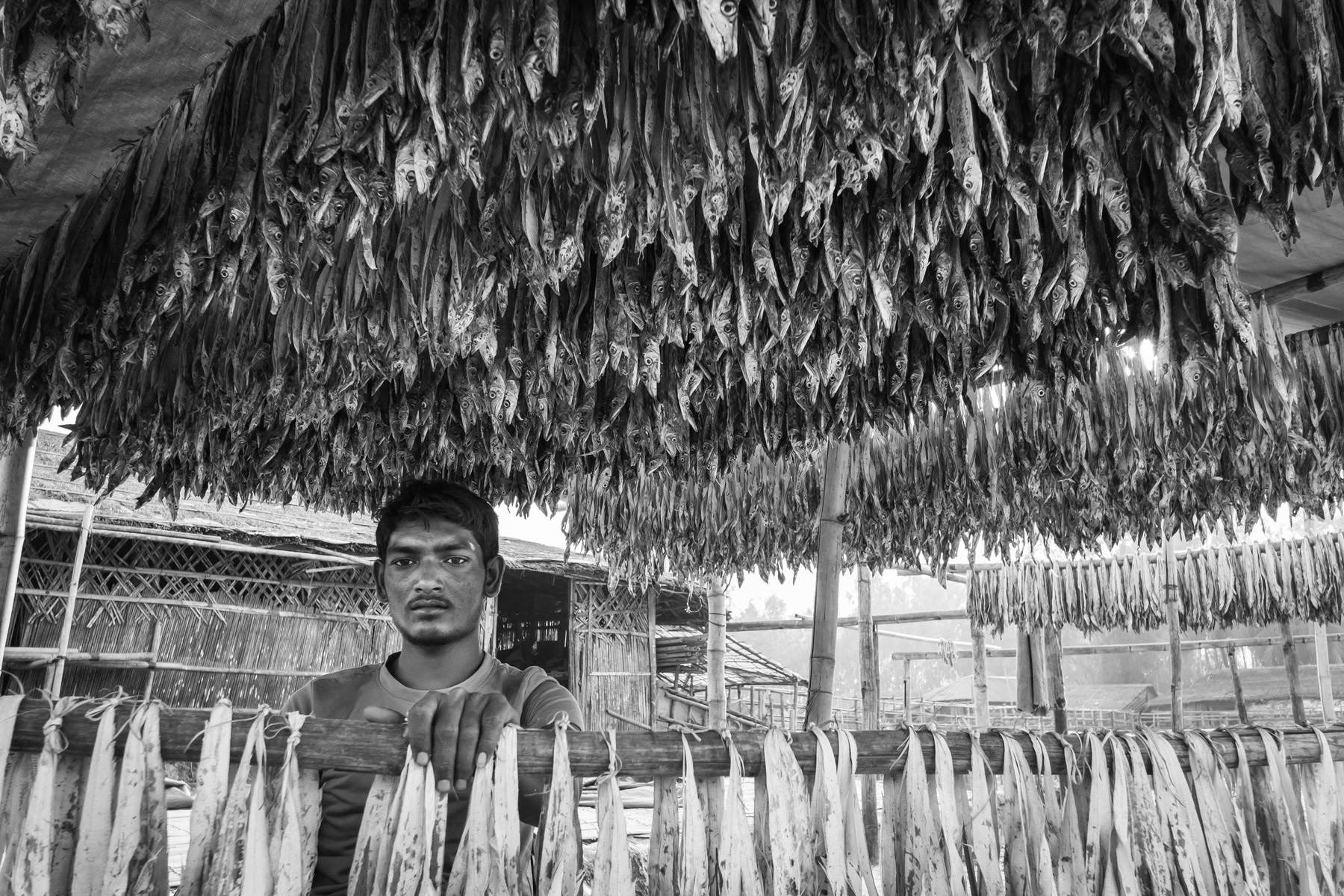
Fish drying areas near Cox's Bazar where numerous Rohingya refugees can find low paid jobs. Najirar Tak, Cox's Bazar, Bangladesh, February 2017
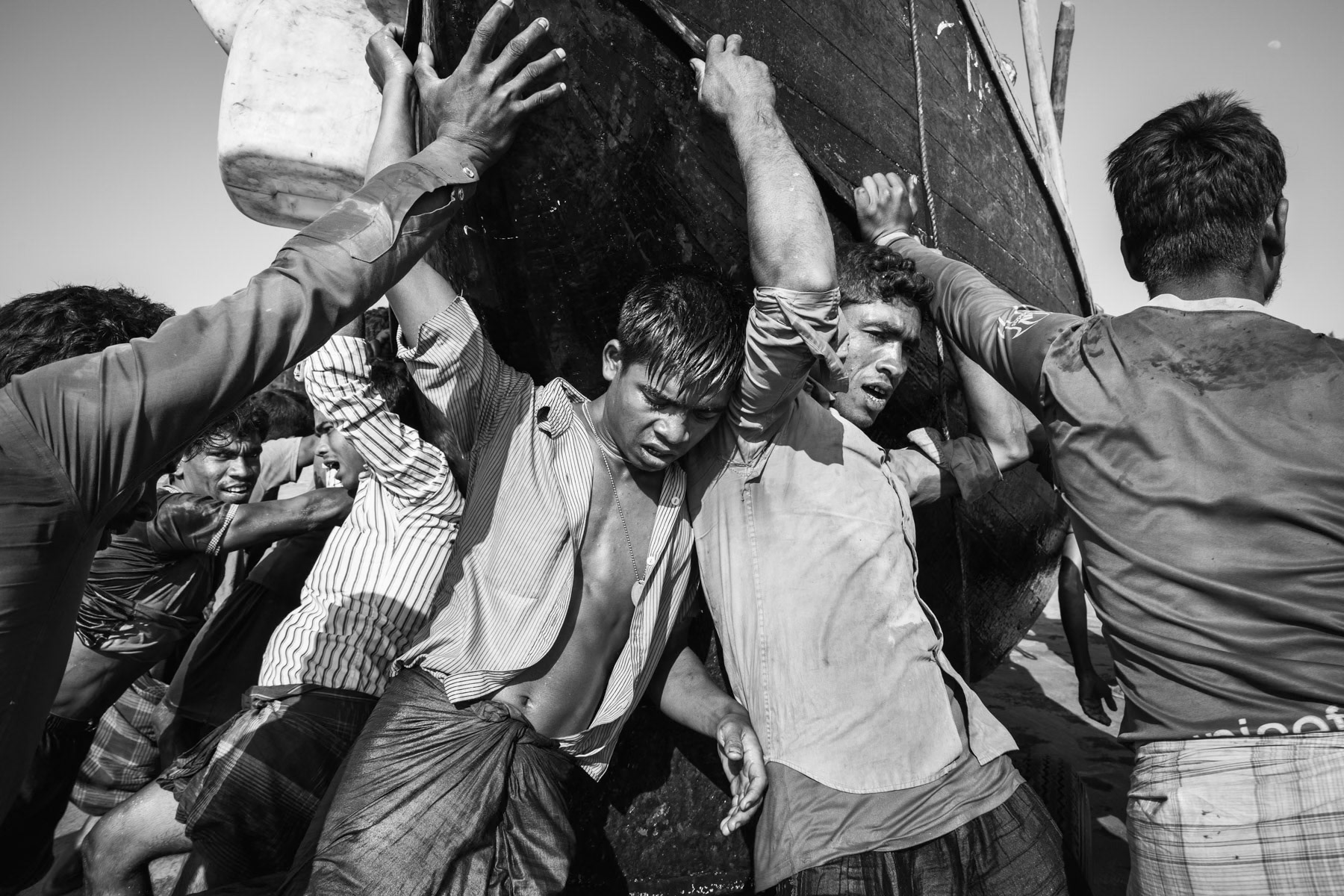
Rohingya daily labour pushing the fishing boat onto the beach after several days at sea. The boat owners are local and cash-in the bulk of the money made. Daily labour make between 1 and 3 dollar a day, sometimes less. Shamlapur near Teknaf, Bangladesh, February 2017
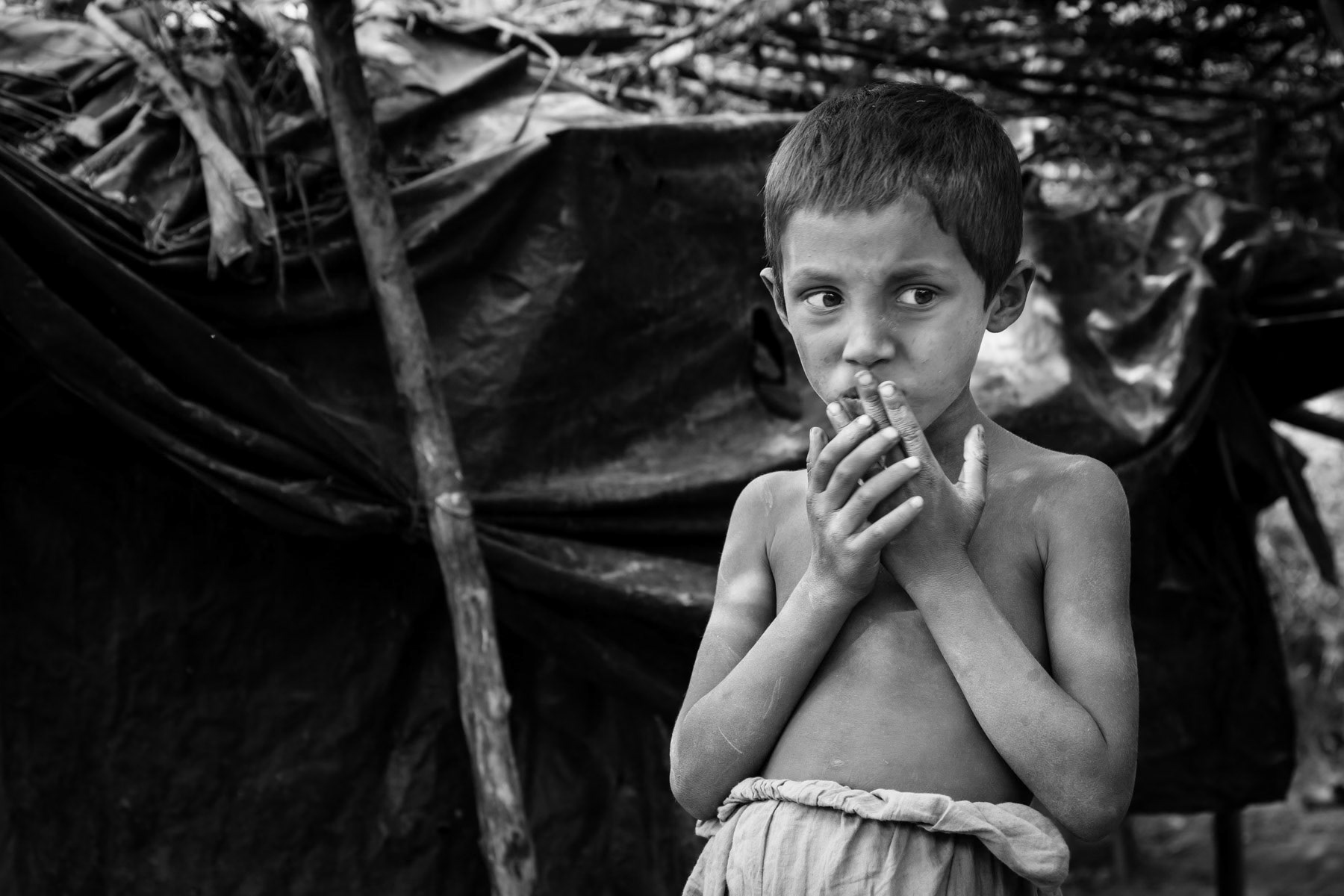
Rohingya refugee boy born in exile, Shamplapur refugee camp, Bangladesh, December 2015
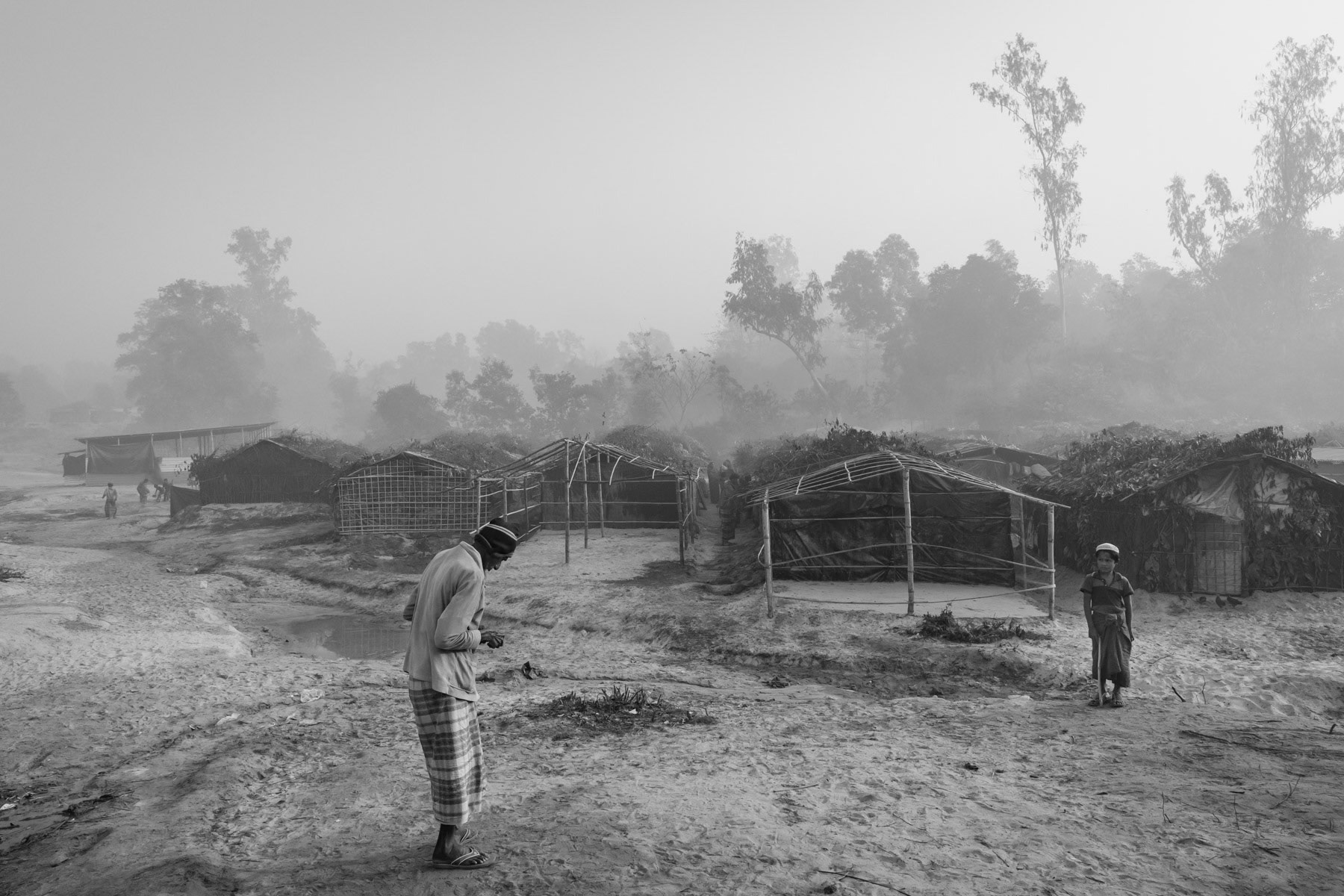
Newly built shelters at a new camp established to cope with a part of the 80,000 Rohingya that have fled northern Maungdaw township in Myanmar since the begining of the robust security crackdown in October 2016. Balukhali camp, Cox's Bazar, Bangladesh, February 2017
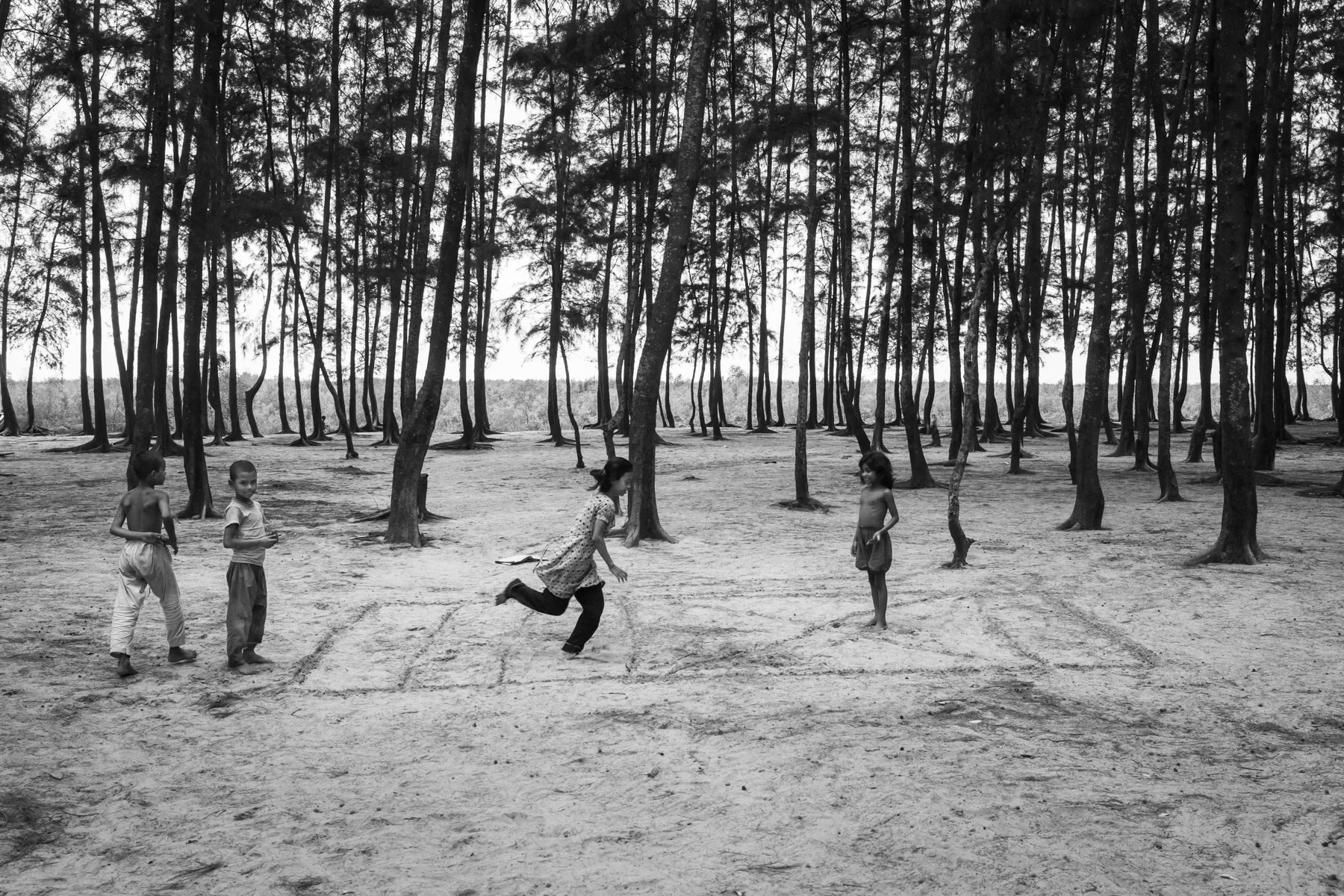
Rohingya children playing. Char Para settlement for rohingya refugees from Burma. Maheskhali, Bangladesh, May 2016
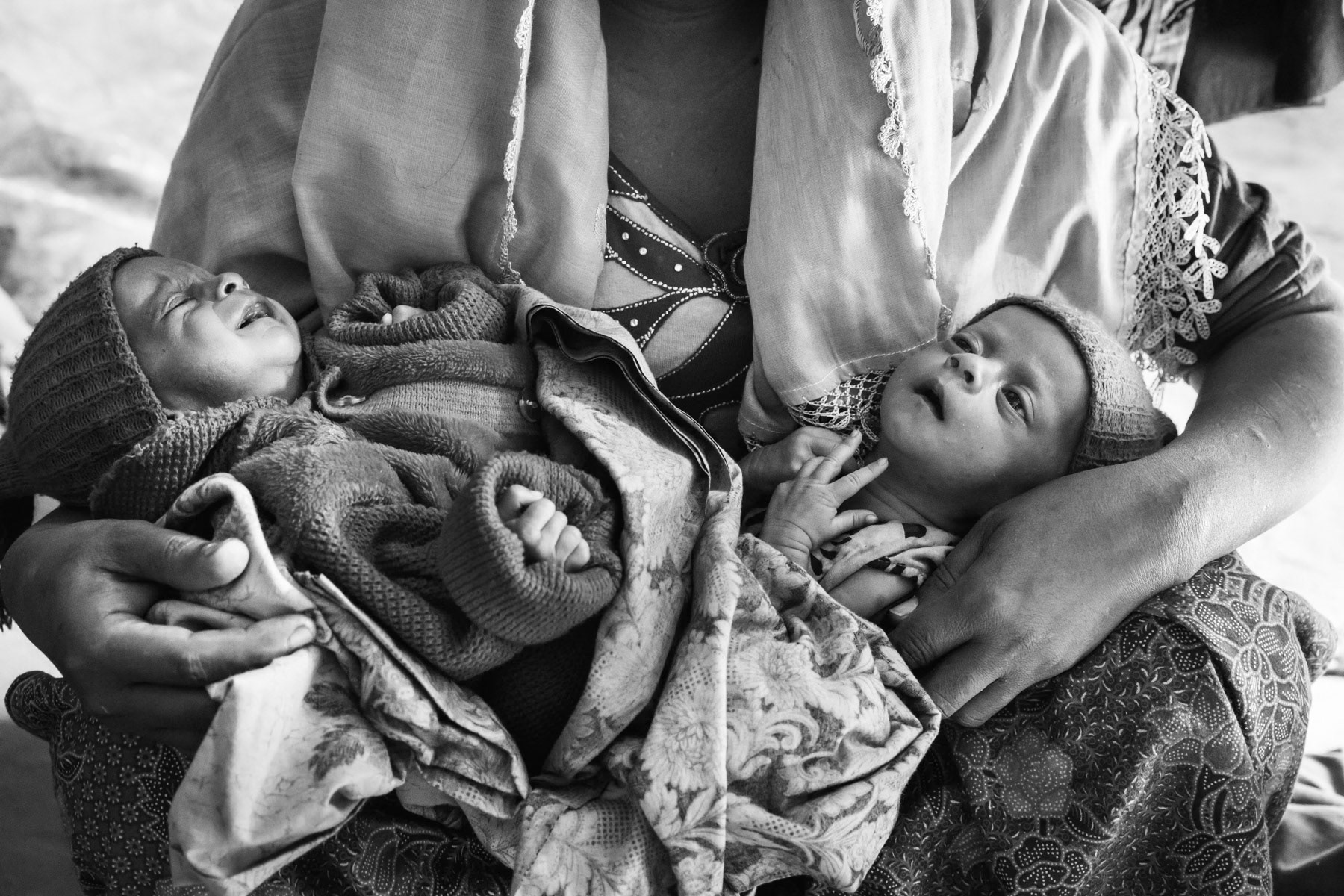
A Rohingya woman that gave birth to twins while escapting from Myanmar through the jungle. Her husband has been killed during the military security operations ongoing since October in northern Rakhine near the border with Bangladesh. Human rights groups have classified the security sweeps as ethnic cleansing campaigns. Balukhali camp for newly arrived refugees, Bangladesh, February 2017
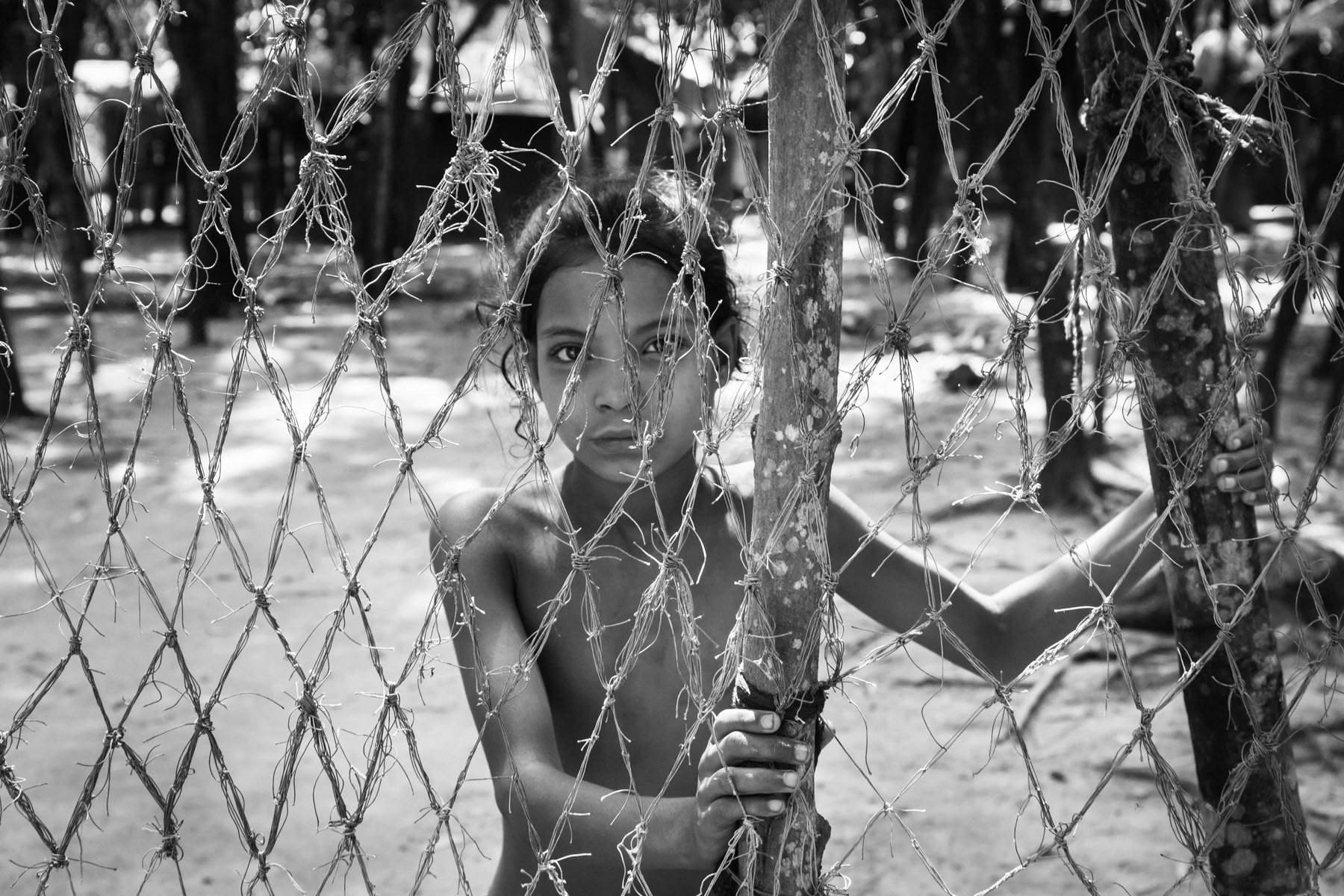
Rohingya refugee, Char Para on Maheskhali peninsula where the small Rohingya community works mainly in the nearby salt fields. Cox's Bazar, Bangladesh, May 2016
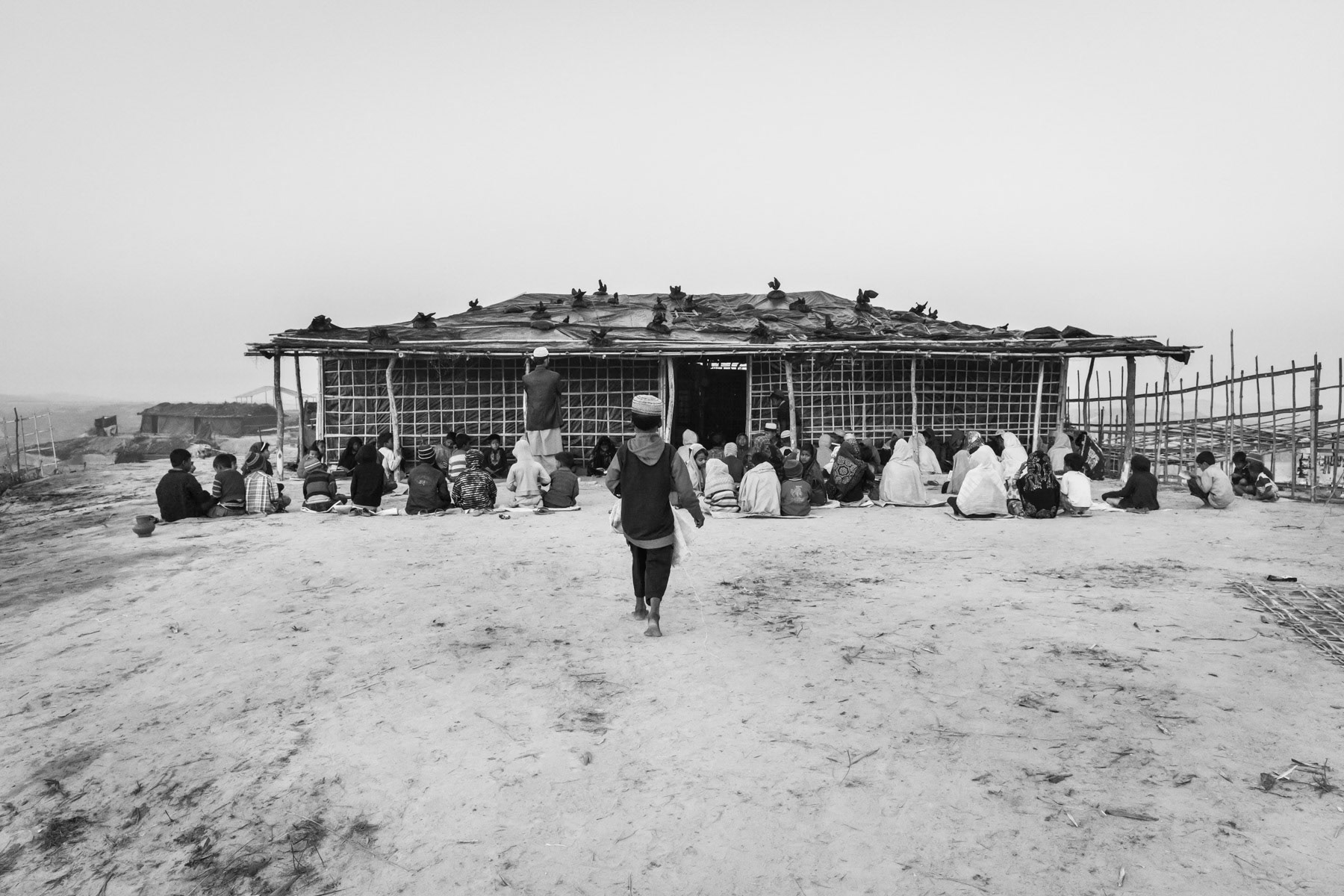
Improvised medressa or coranic school for Rohingya children that arrived from Myanmar during the past weeks. Having no access to formal education, un-registered Rohingya refugees have only the coranic schools as a sole form of education. New part of Kutupalong refugee camp for newly arrived refugees from Myanmar. Cox's Bazar, February 2017
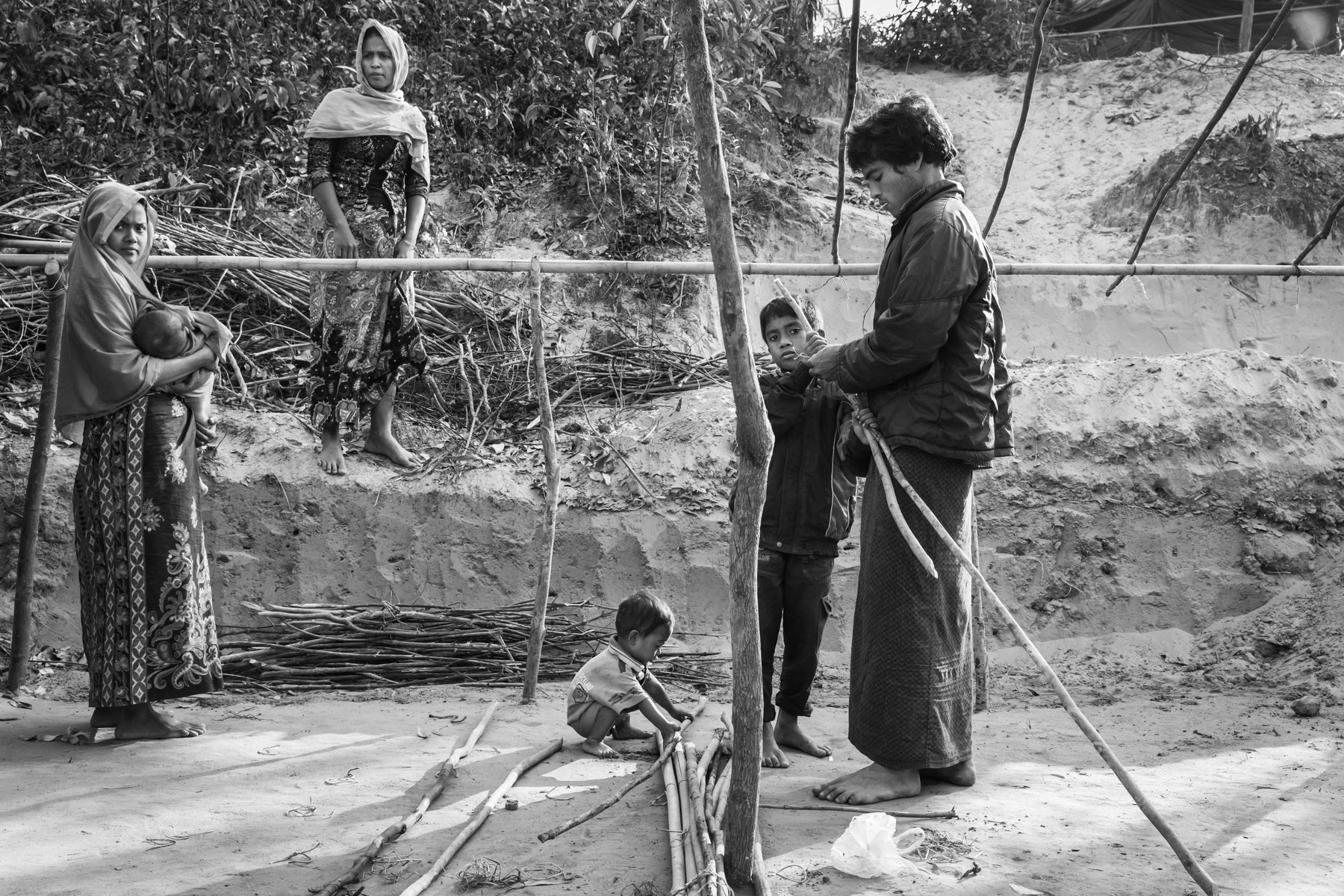
Rohingya family that arrived few days ago with her family fleeing persecution and ethnic cleansing campaigns in northern Rakhine. Balukhali refugee camp, Bangladesh, February 2017
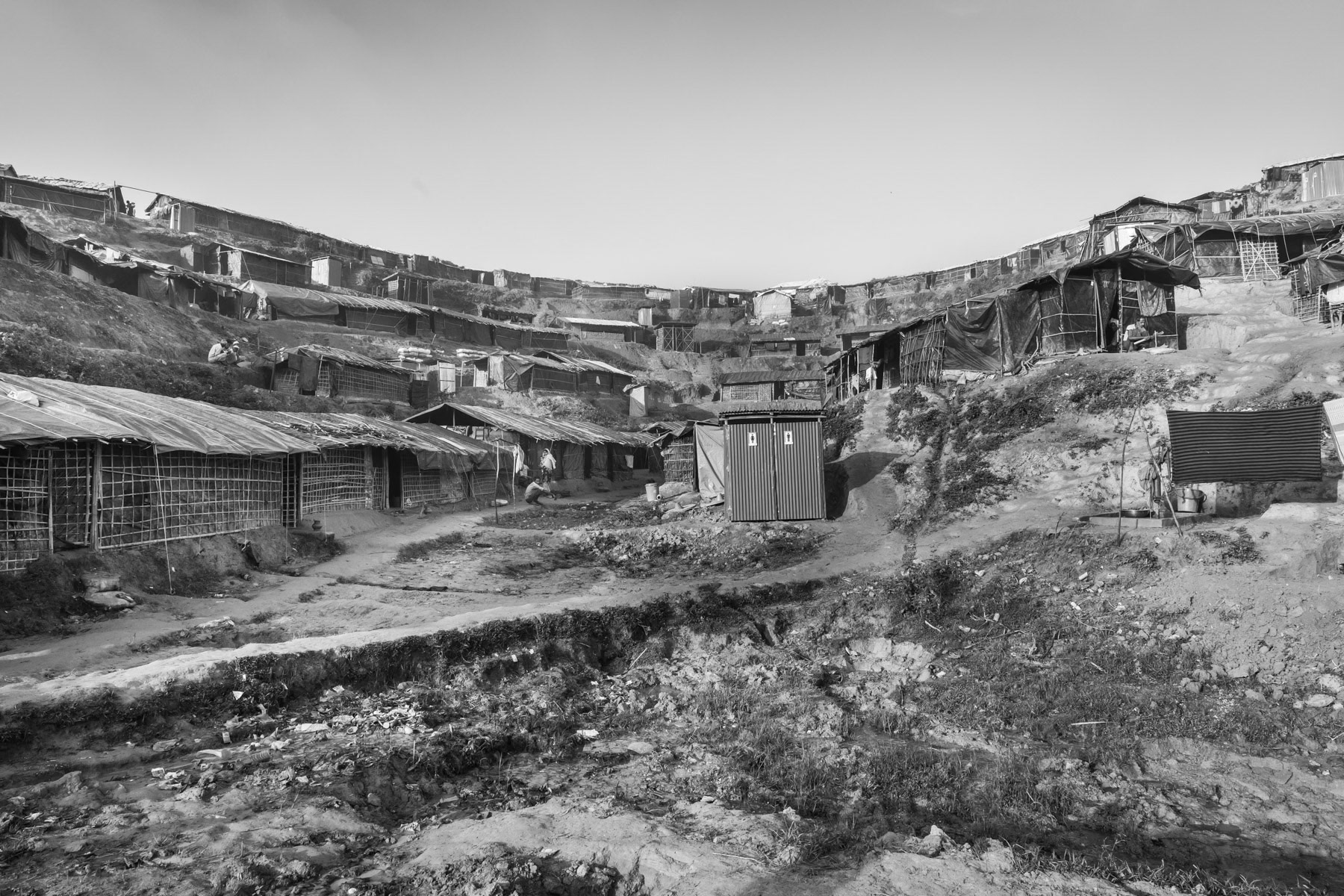
New makeshift blocks for the newly arrived Rohingya refugees from Myanmar. More than 650,000 refugees have fled persecution in neighbouring Myanmar since August 2017. Balukhali refugee camp, Ukhiya, Bangladesh, November 2017
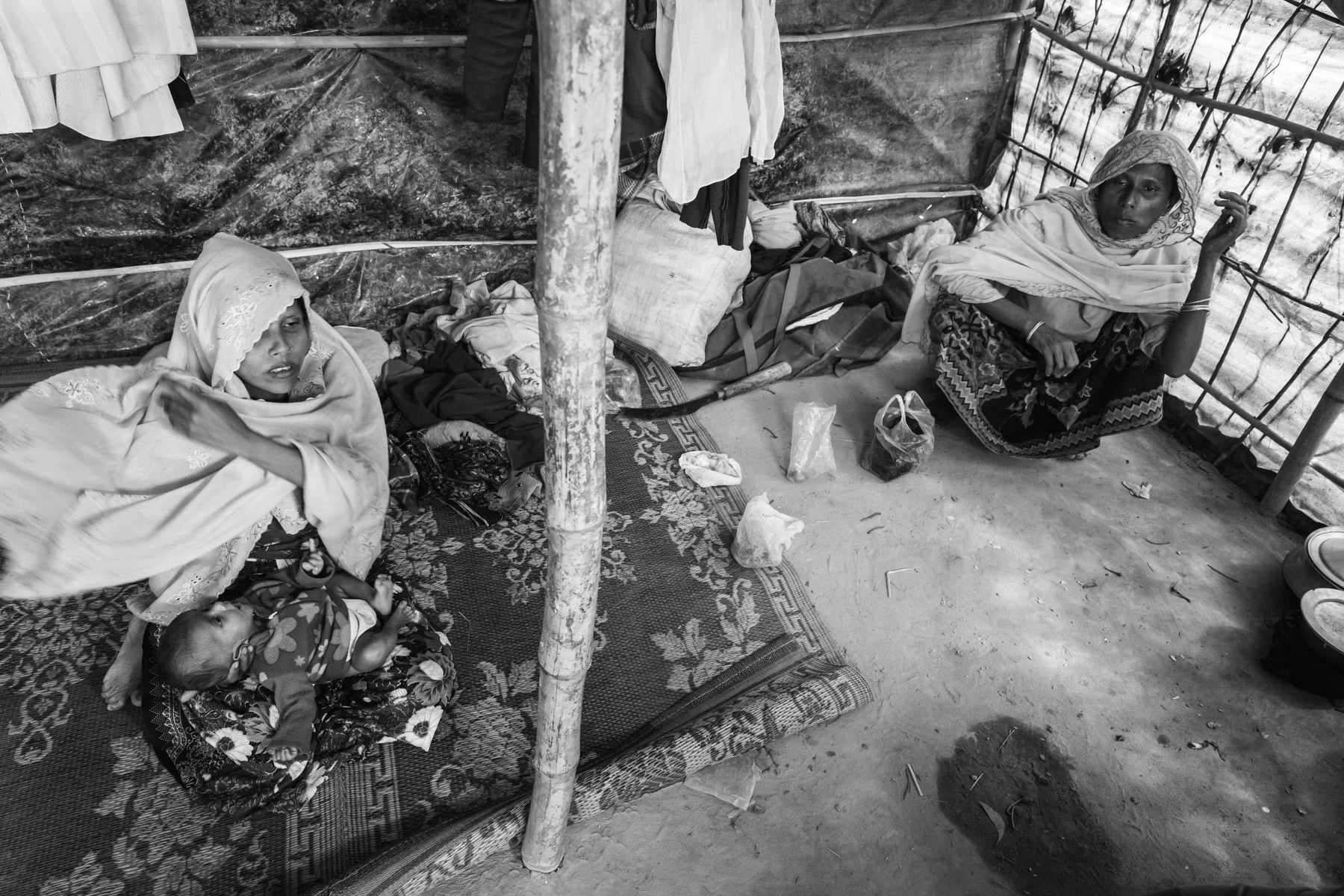
Rape victim with her 2 month old baby and mother in law. She was gang-raped by 4 soldiers one week after giving birth and after her husband was killed. Fled 3 weeks ago from their village in northern Maungdaw township accross the border in Myanmar. Bulukhali camp for recently arrived persecuted Rohingya from Myanmar, Cox's Bazar, Bangladesh, February 2017

Rohingya woman and her two young children, one of the hunders of daily arrivals in Bangladesh. She fled north Maungdaw township in Myanmar after being gang raped for 3 days by soldiers. Her husband was arrested by the army and has since dissapeared. Kutupalong refugee camp for newly arrived victims of the ongoing ethnic cleansing campaign. Cox's Bazar, Bangladesh, February 2017
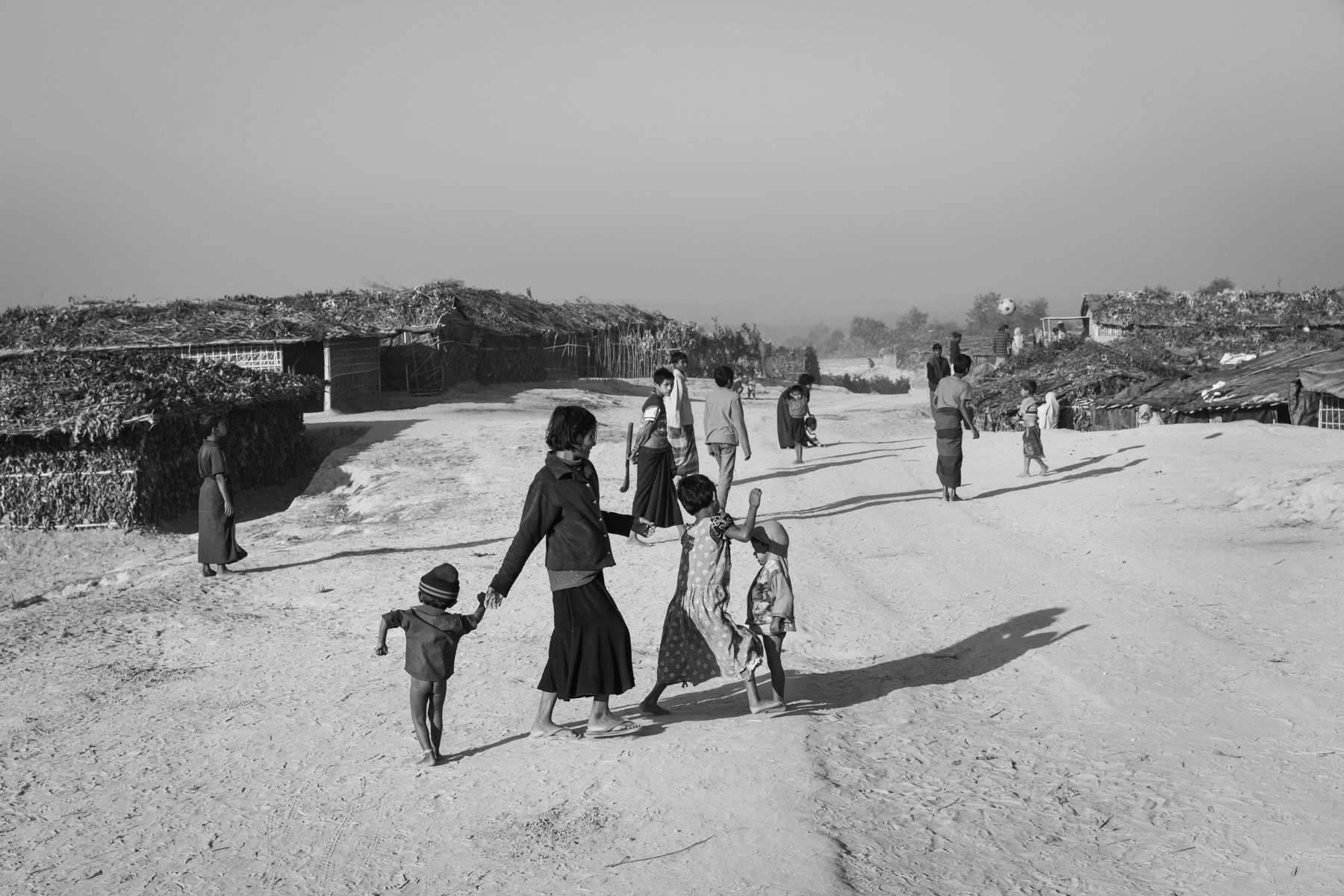
Newly built part of Kutupalong refugee camp hosting more than 50,000 Rohingya refugees that have arrived in Kutupalong camp alone during the past 3 months. Cox's Bazar, Bangladesh, February 2017
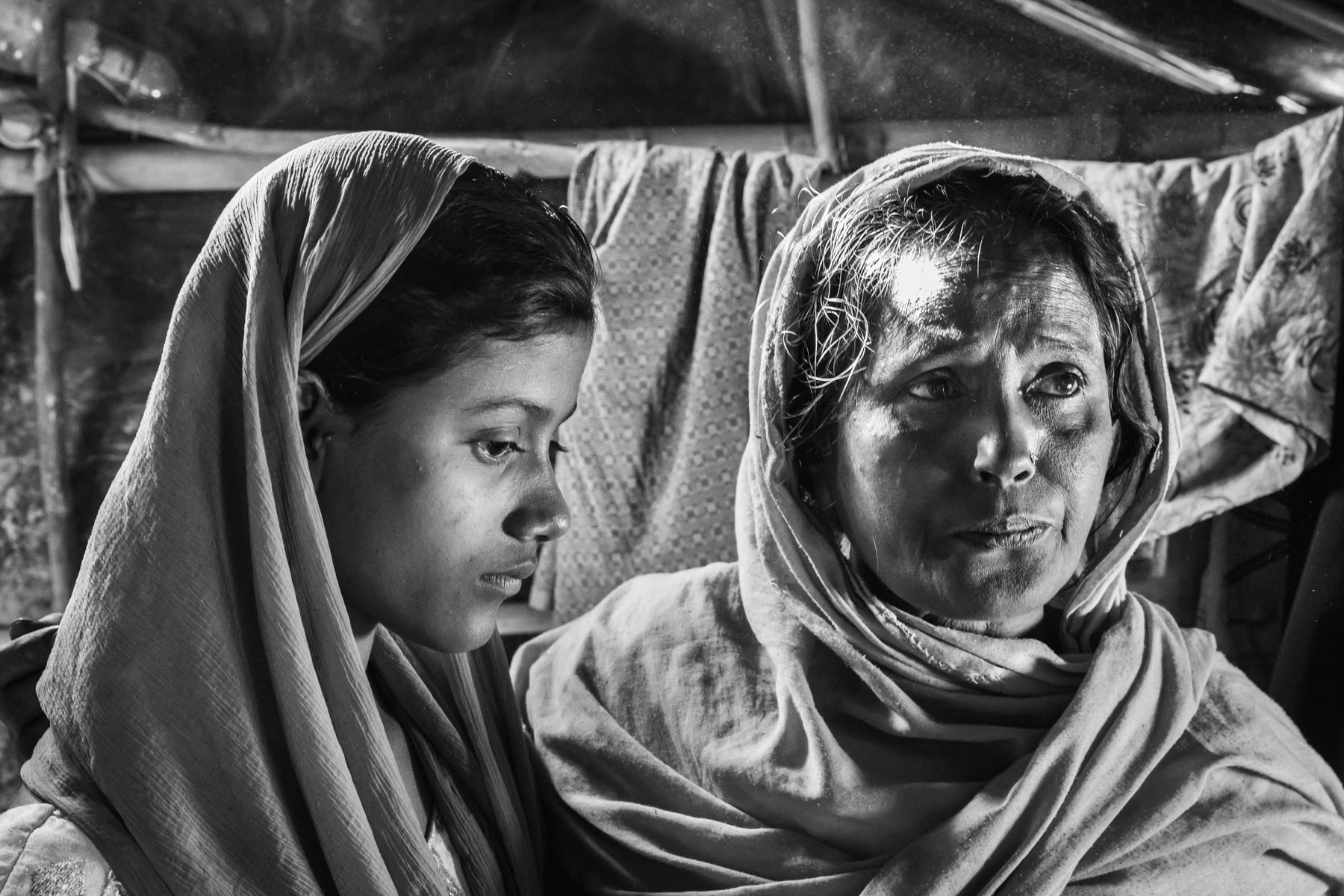
Rohingya girl with her mother, the girl of 14 was hit by a rubber bullet at the head. Ever since experiences severe headaches. Arrived 6 weeks ago from Maungdaw in Burma. Kutupalong refugee camp for Rohingya, Bangladesh, February 2017
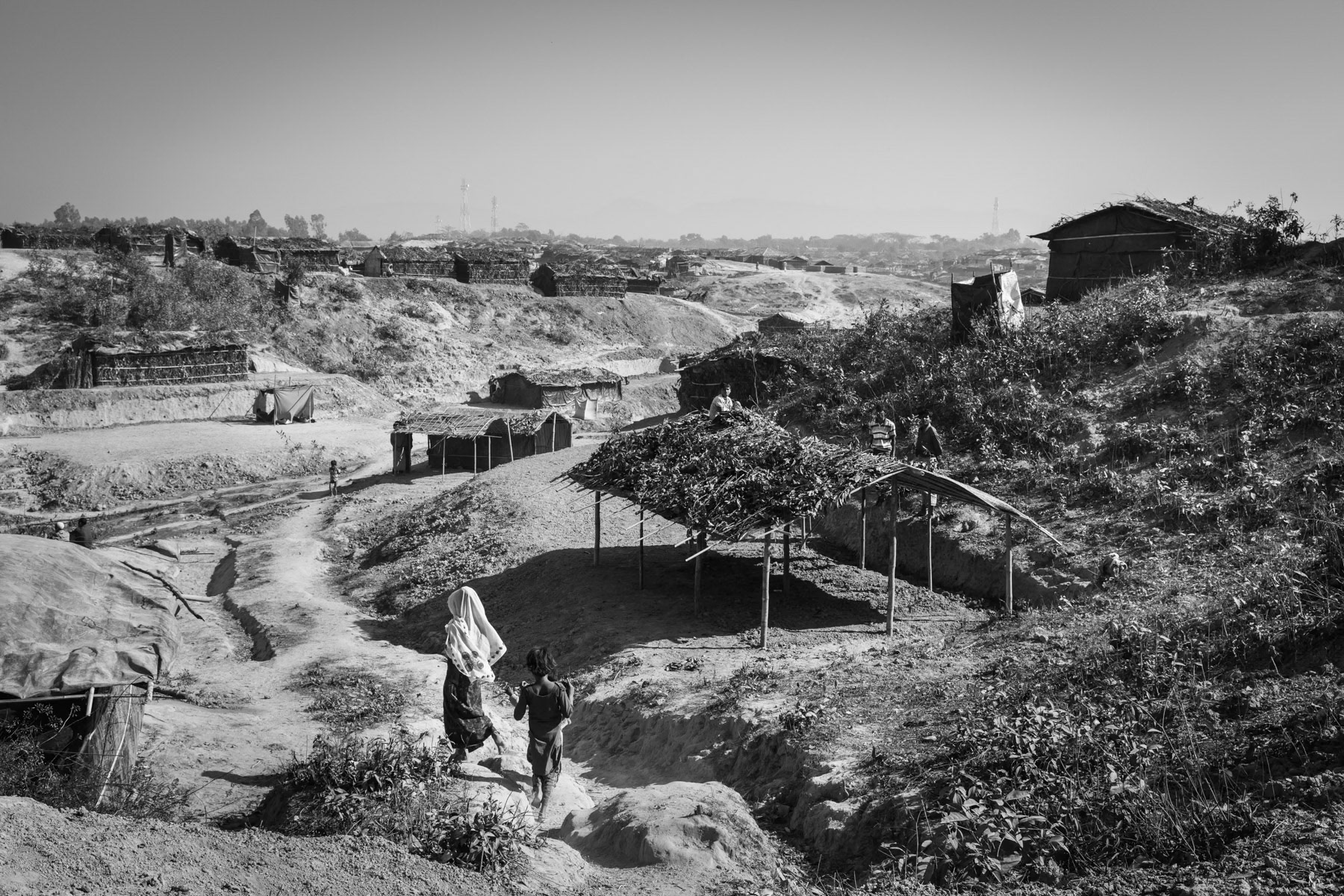
New makeshift construction for the new wave of Rohingya refugees arriving In Bangladesh. Nearly 100,000 persecuted refugees have arrived from Maungdaw township in Myanmar since October 2016. New extension of Kutupalong refugee camp, Cox's Bazar, Bangladesh, February 2017
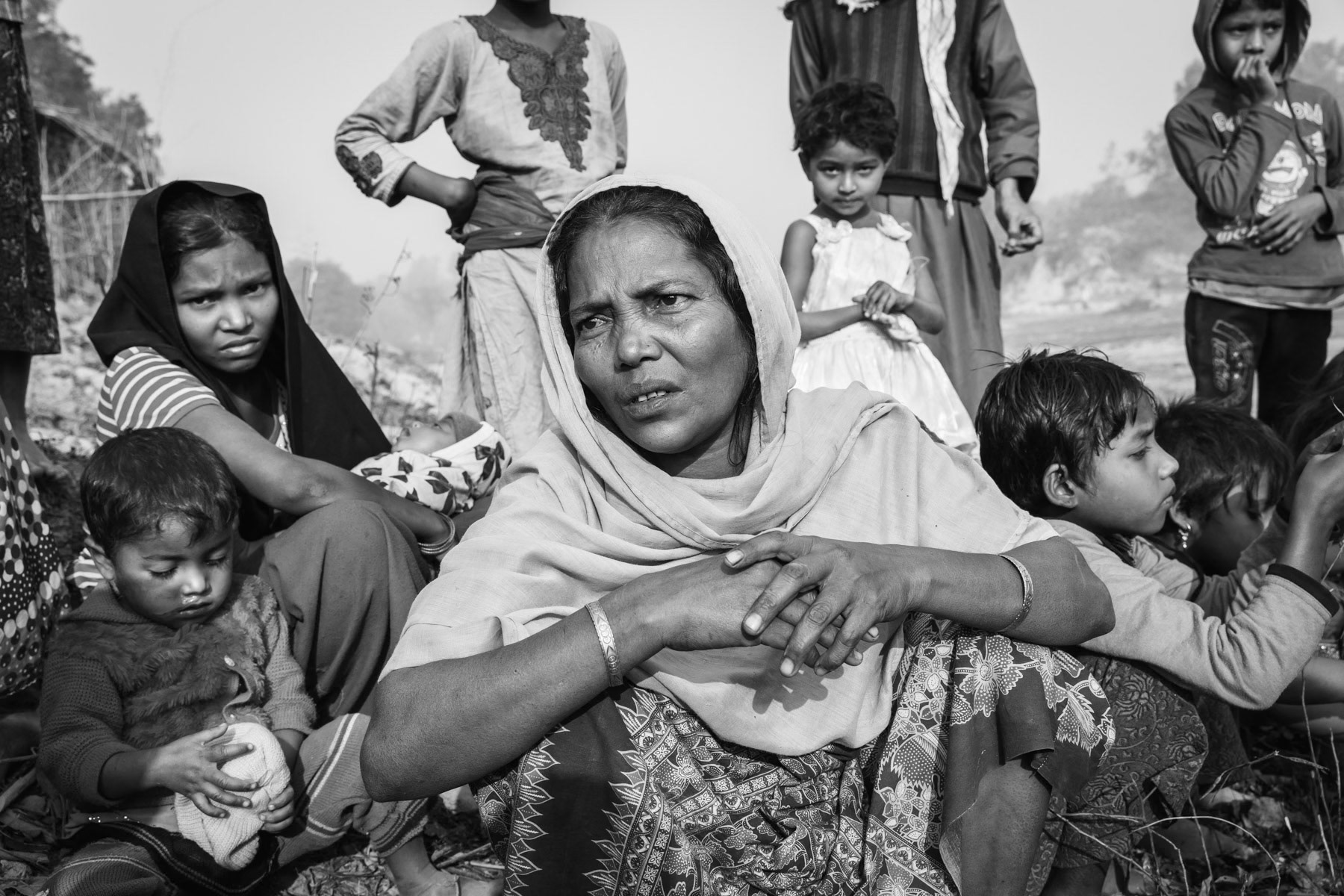
Rohingya refugees that arrived 7 days ago from Myanmar. They have no shelter yet, and sleep at other refugee's shelters and sit outside during the day. Balulkali camp still receiving an average of 100 refugees per day. Bangladesh, February 2017
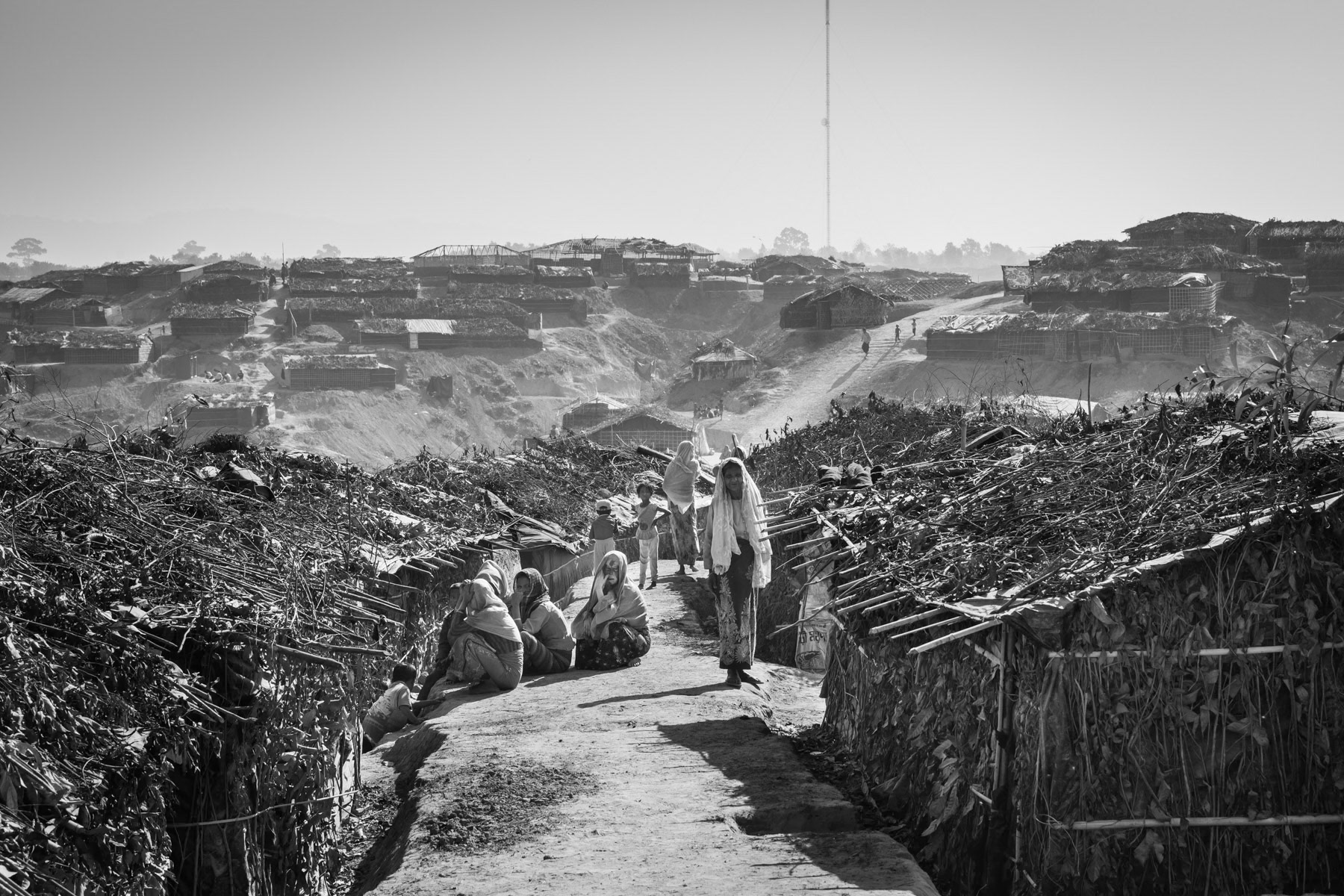
Rohingya families that arrived few days ago fleeing persecution and ethnic cleansing campaigns in northern Rakhine. Kutupalong refugee camp, Bangladesh, February 2017
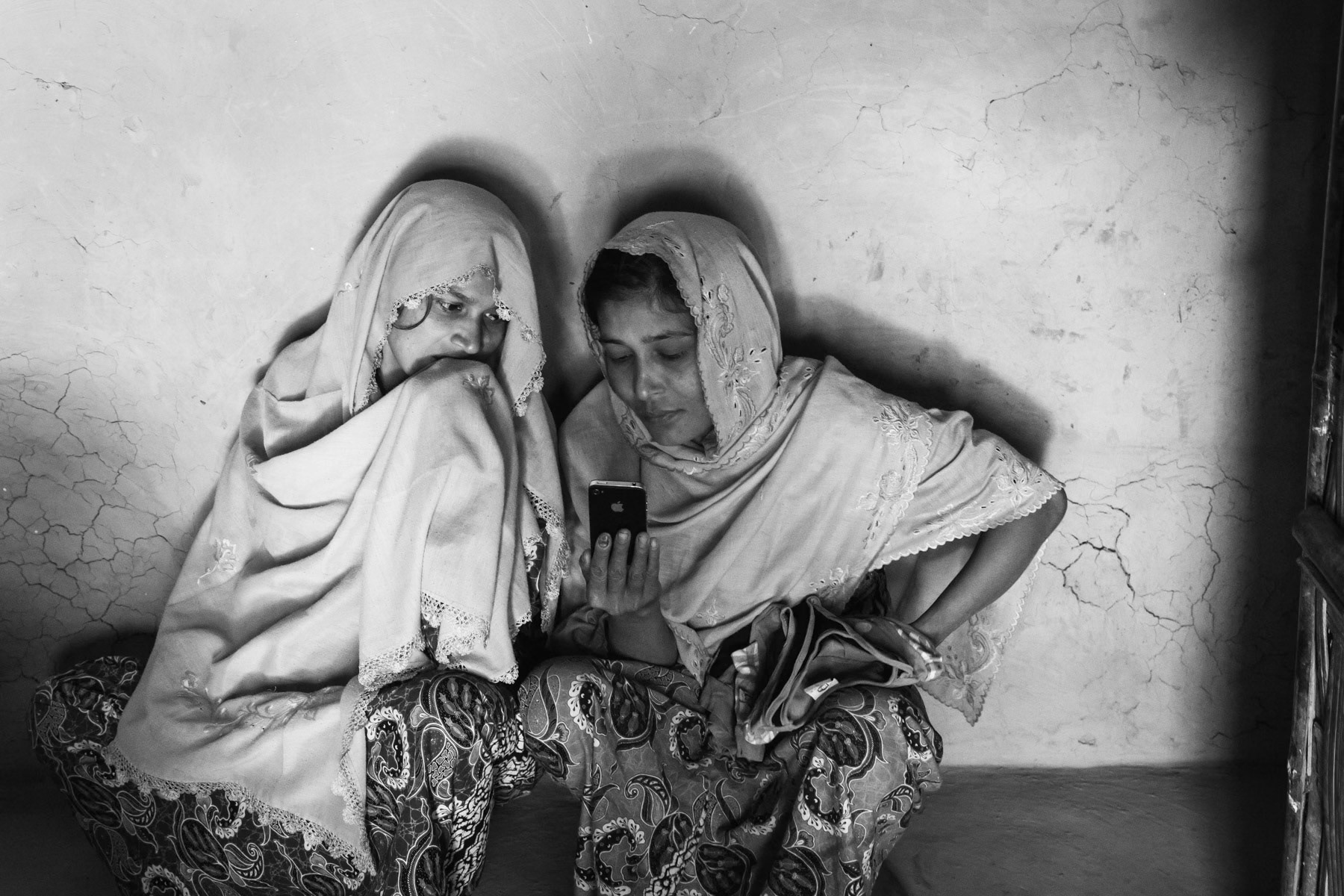
Family communicating with their brother Zahid in Malaysia for the first time since they fled Myanmar. Zahid fled to Malaysia by boat as a refugee in 2009 and is now providing money for his family. The family arrived two weeks earlier to Bangladesh and lives in a shed they rent for 40 dollar per month. Nhila village, Teknaf, Bangladesh, February 2017
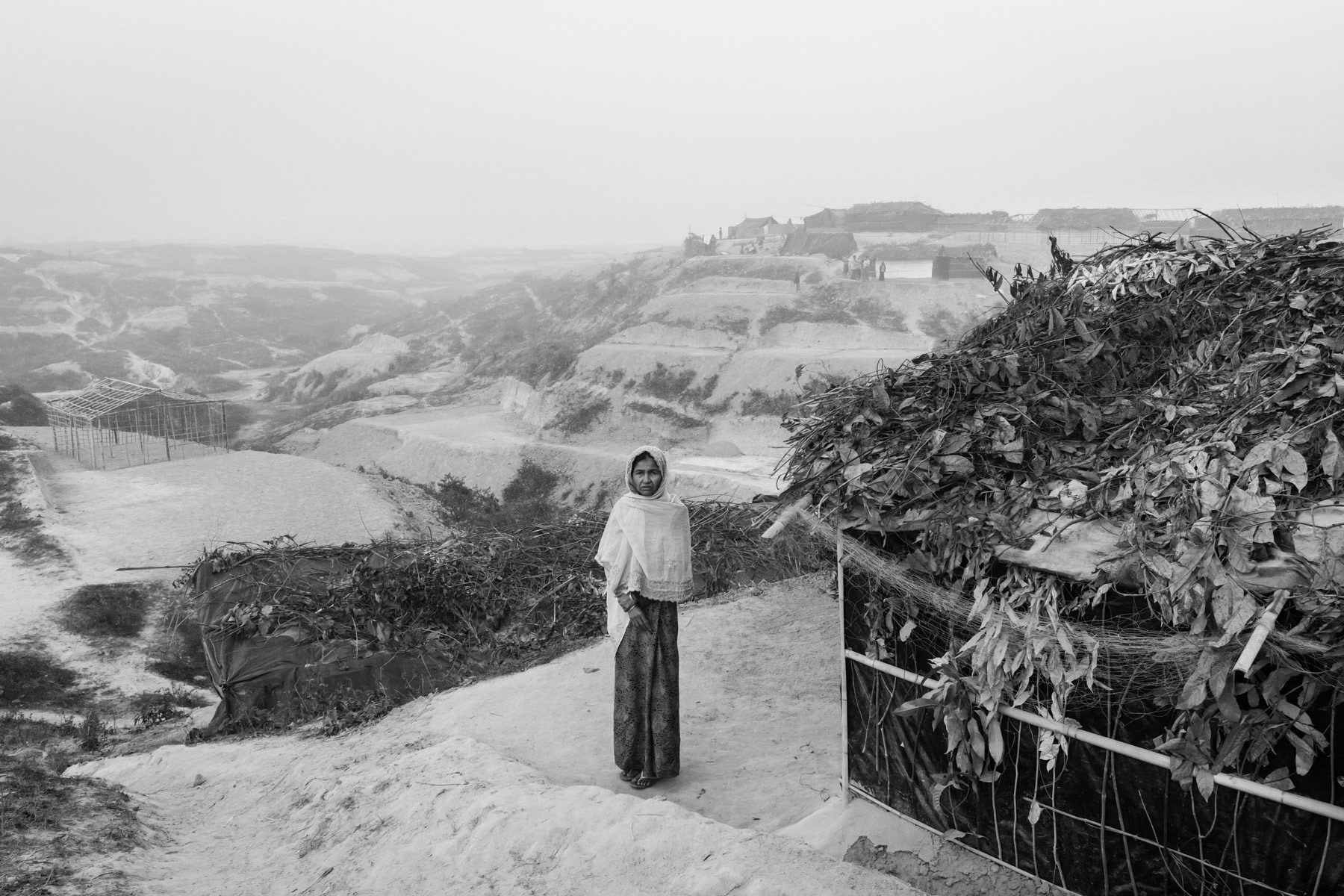
Newly built part of Kutupalong refugee camp hosting more than 50,000 Rohingya refugees that have arrived in Kutupalong camp alone during the past 3 months. Cox's Bazar, Bangladesh, February 2017

Rohingya refugee girl, Kutupalong camp, Bangladesh, February 2017
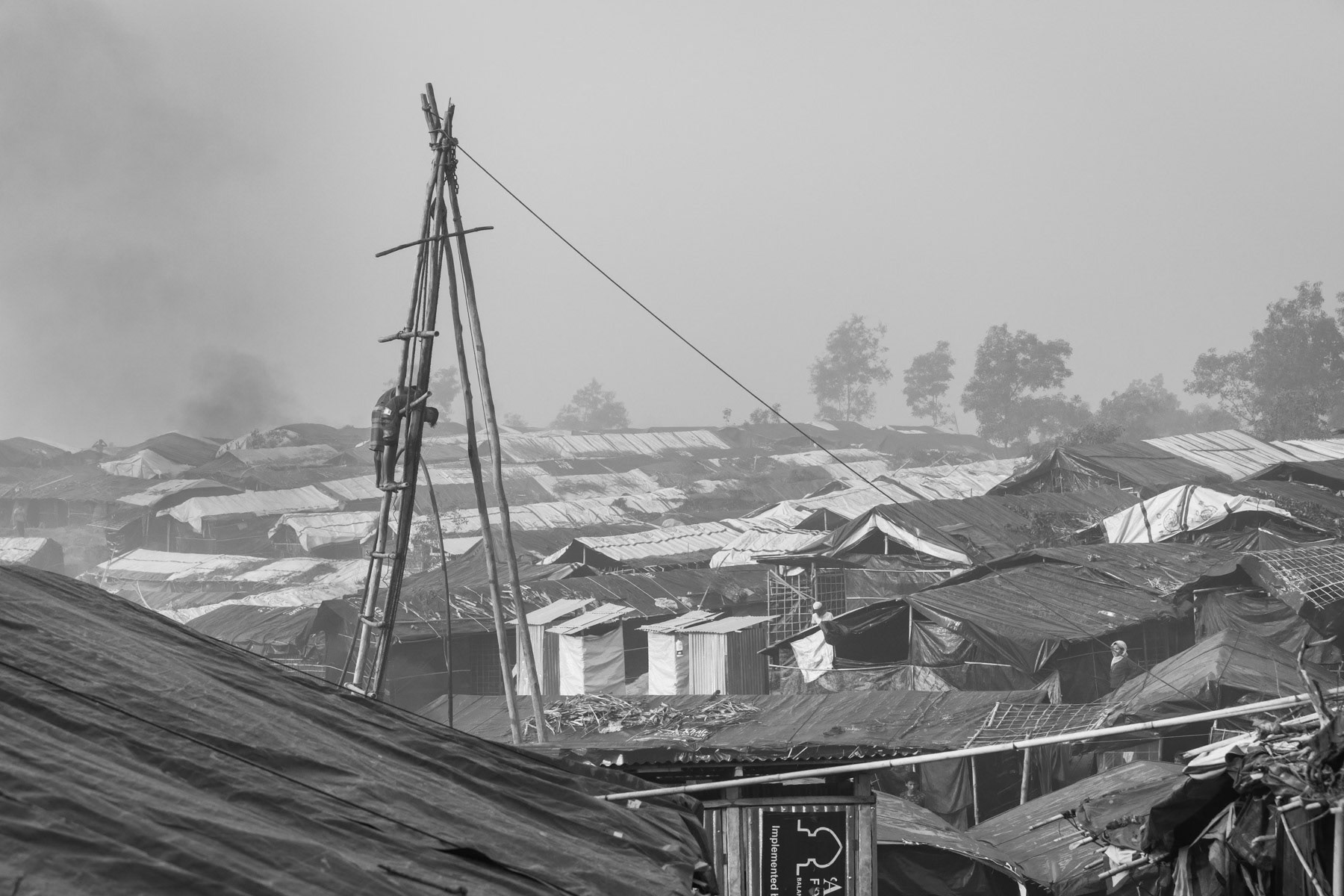
A deep tube well is being constructed in new makeshift blocks for the newly arrived Rohingya refugees from Myanmar. More than 650,000 refugees have fled persecution in neighbouring Myanmar since August 2017. Aid agencies are concerned the situation will spin out of control due to lack of clean water and lack of sanitation. Lambashiya section of Kutupalong refugee camp, Ukhiya, Bangladesh, November 2017
